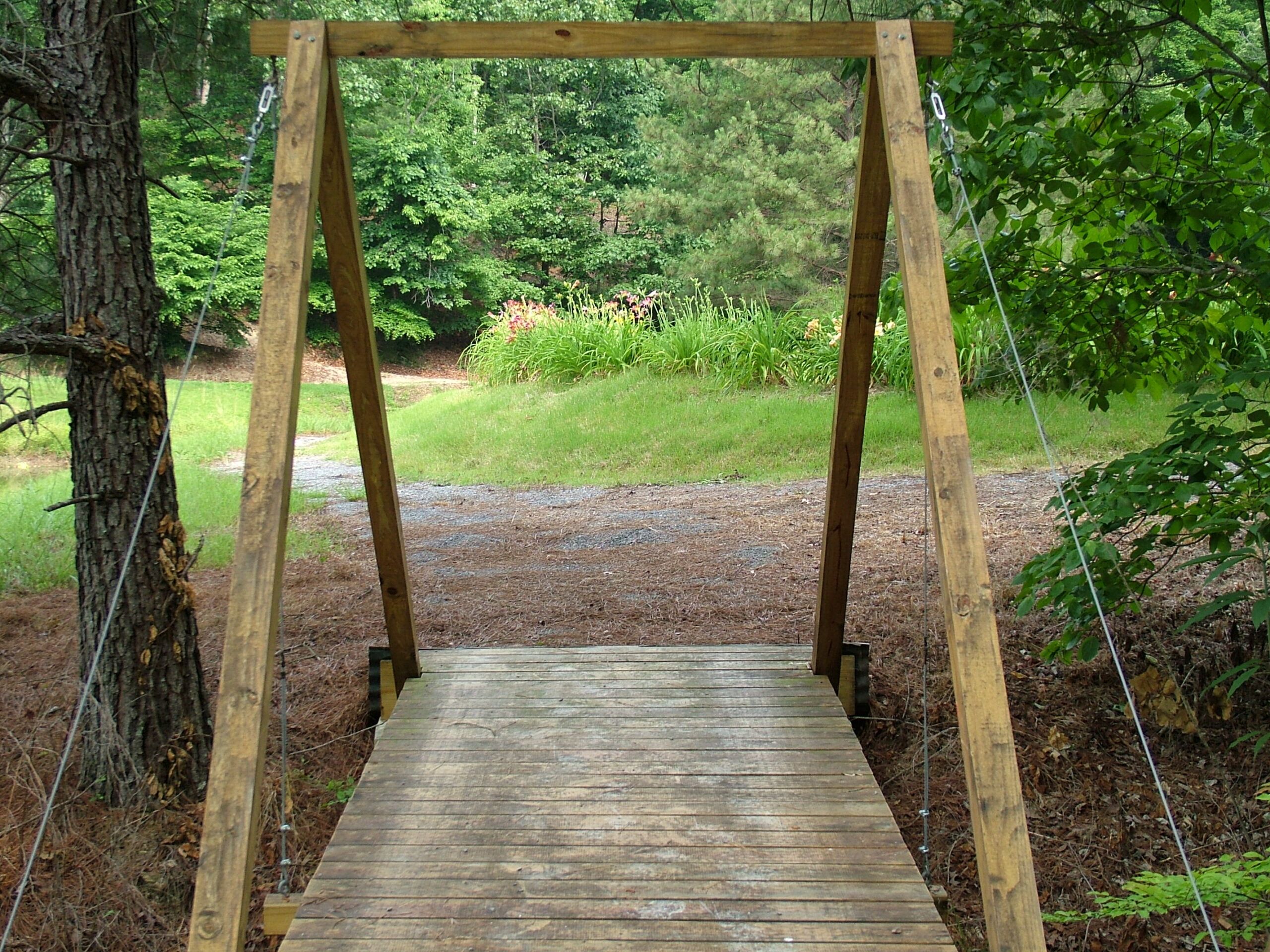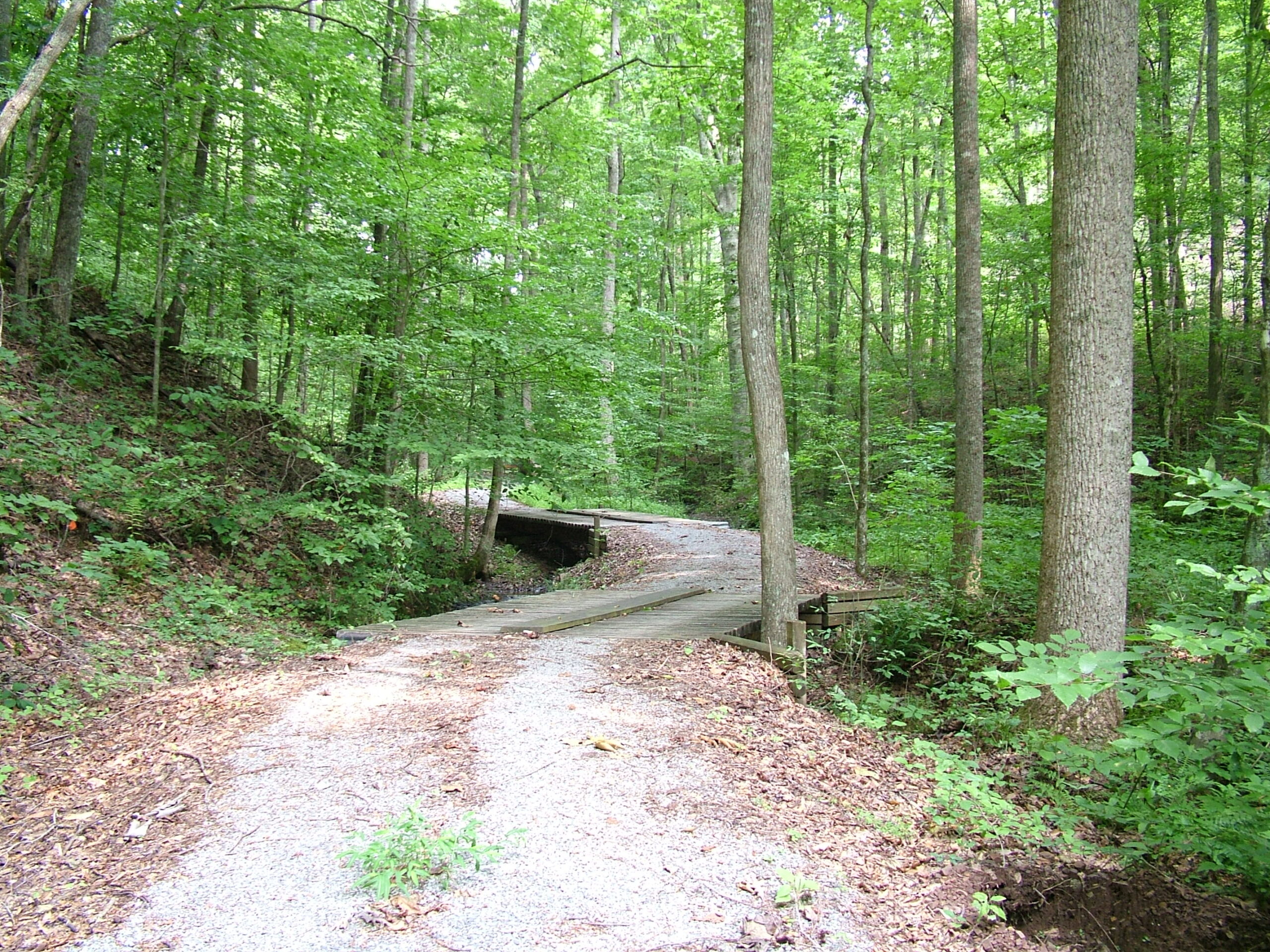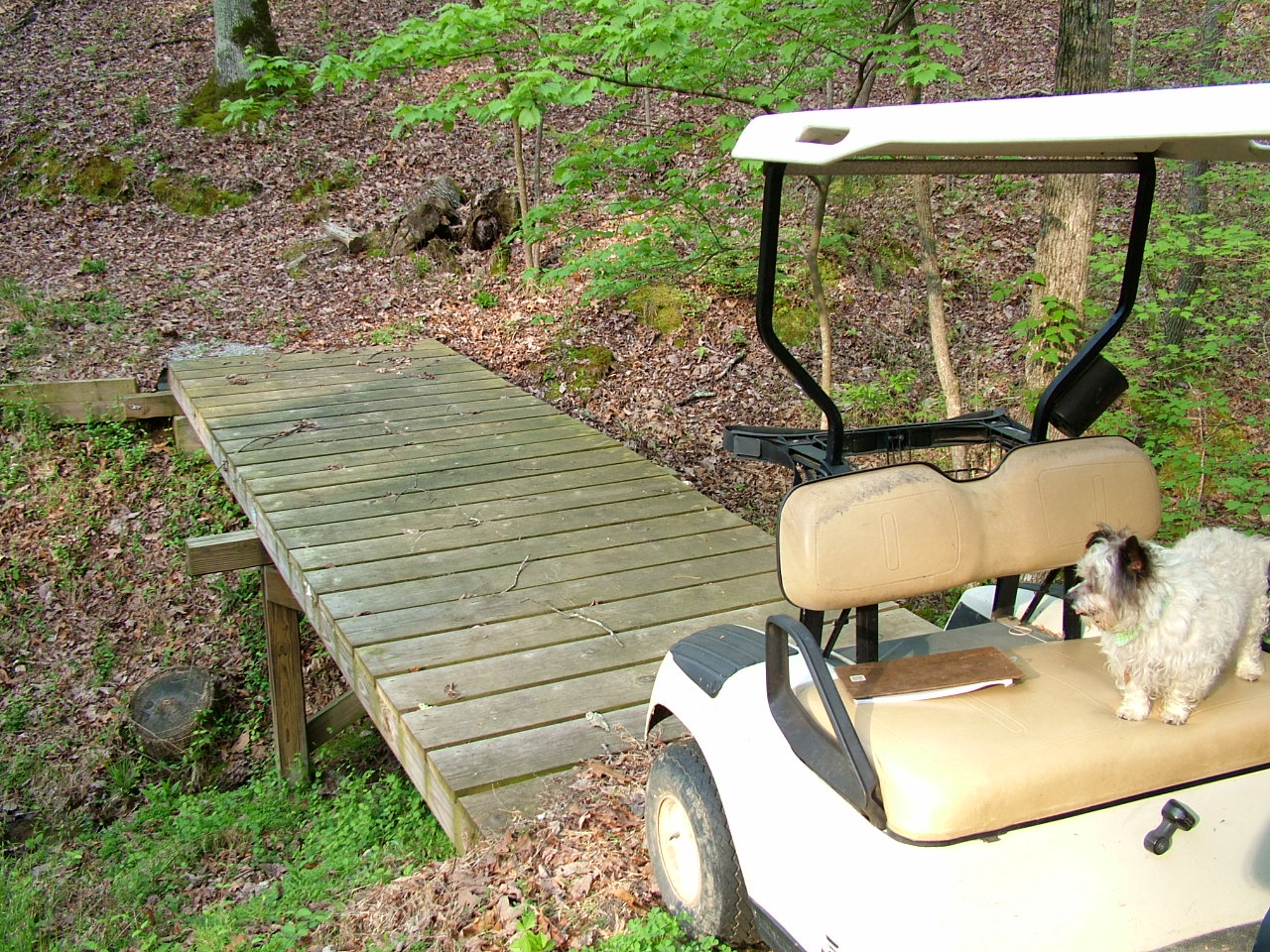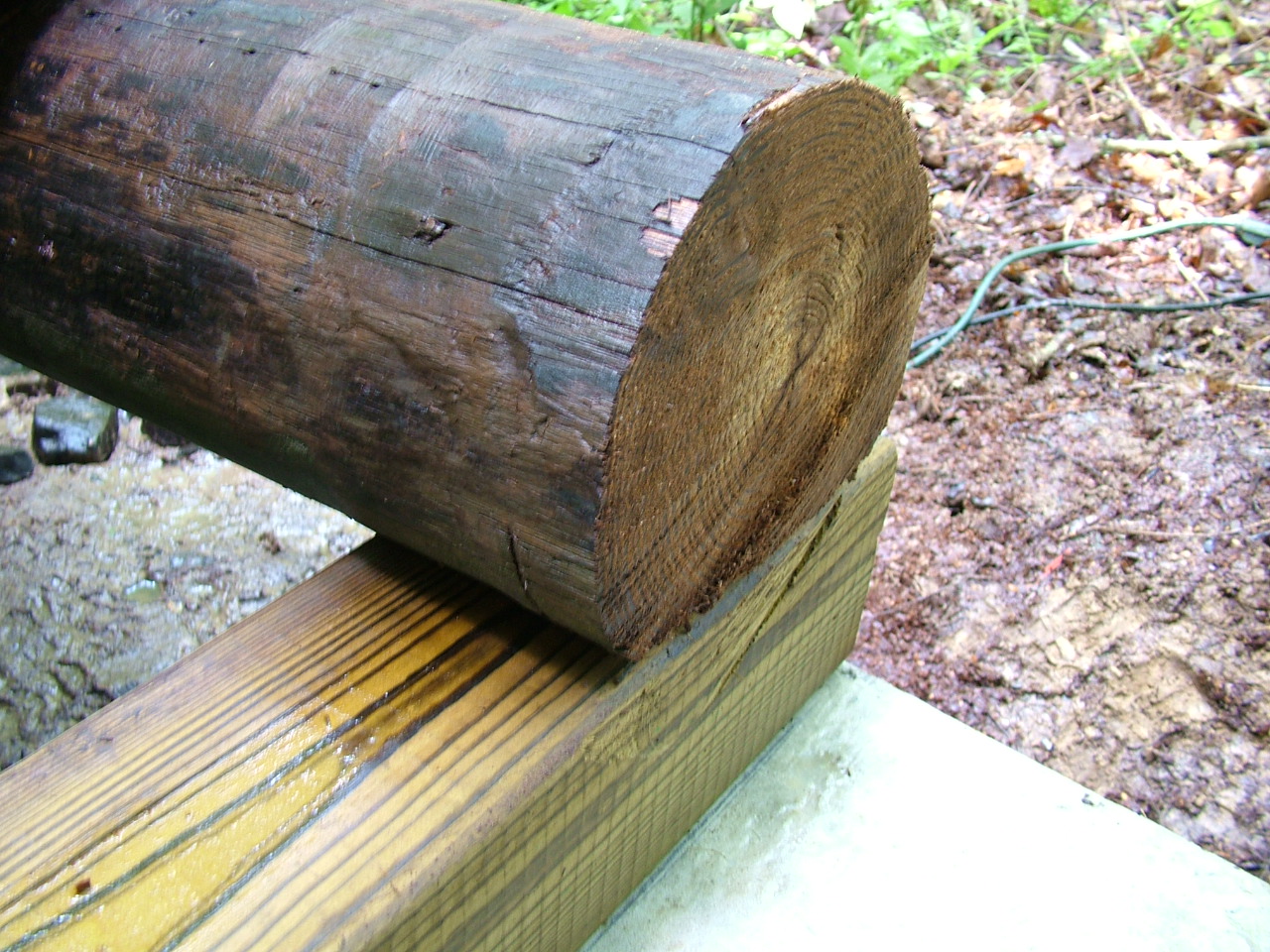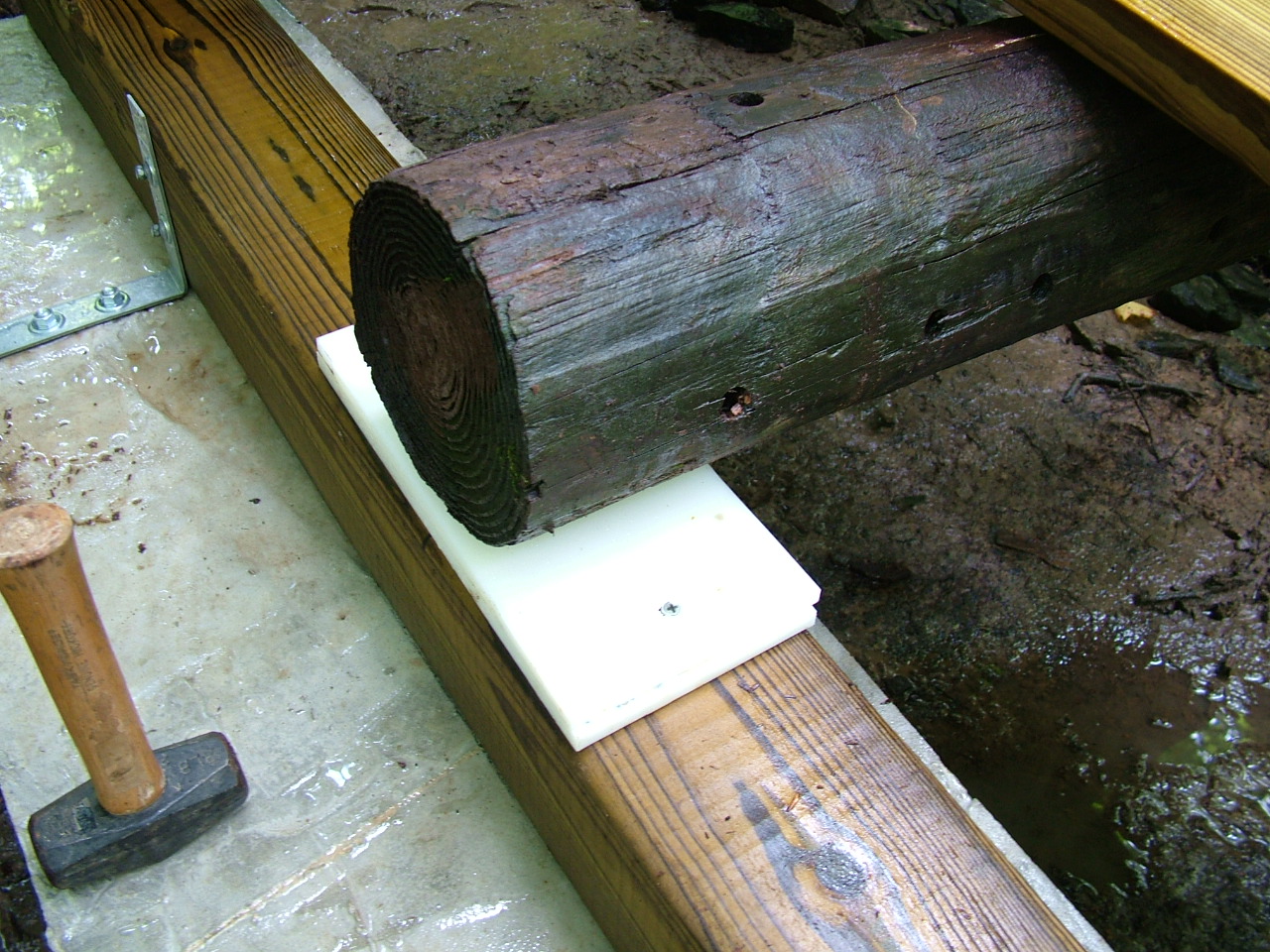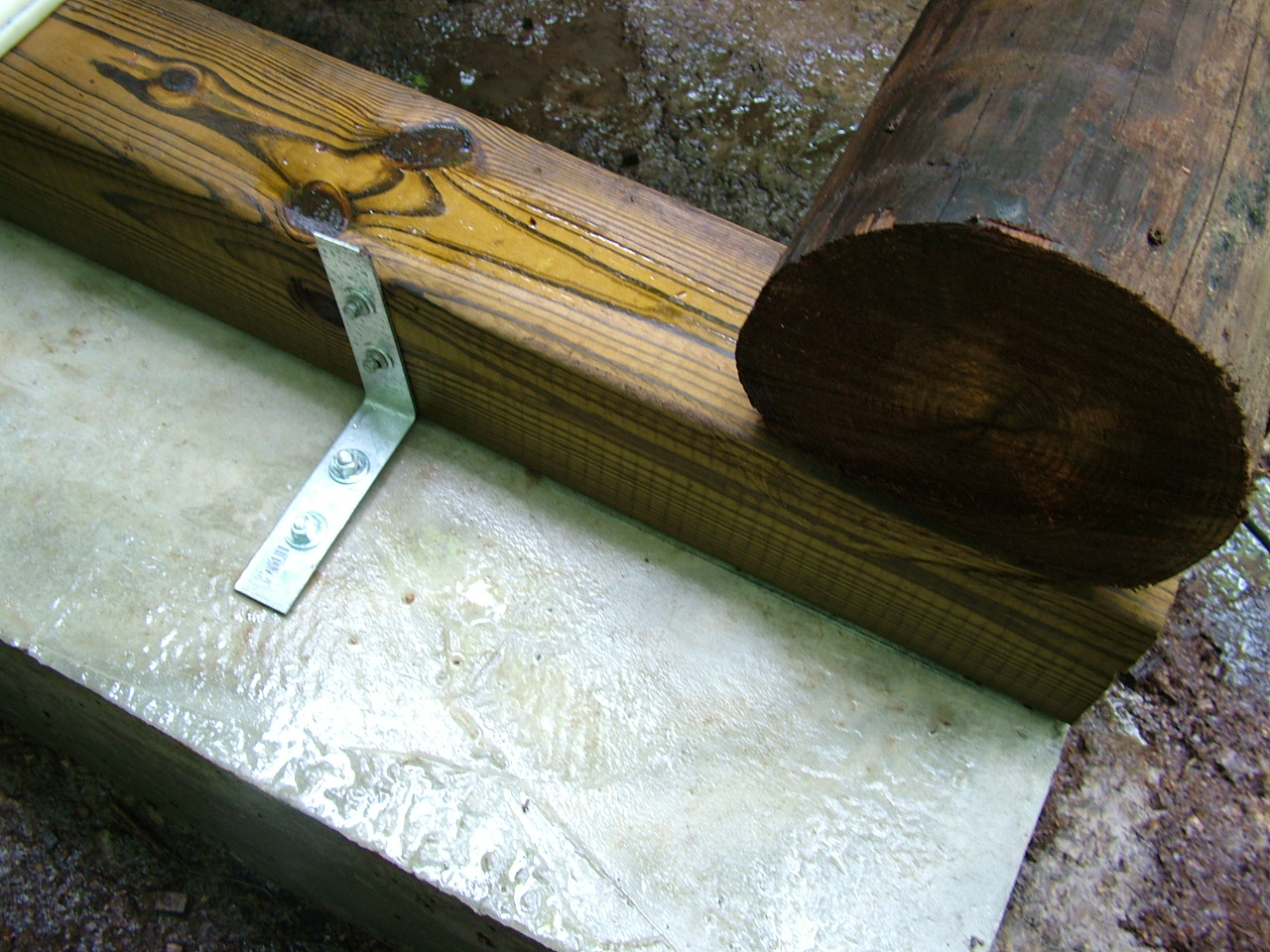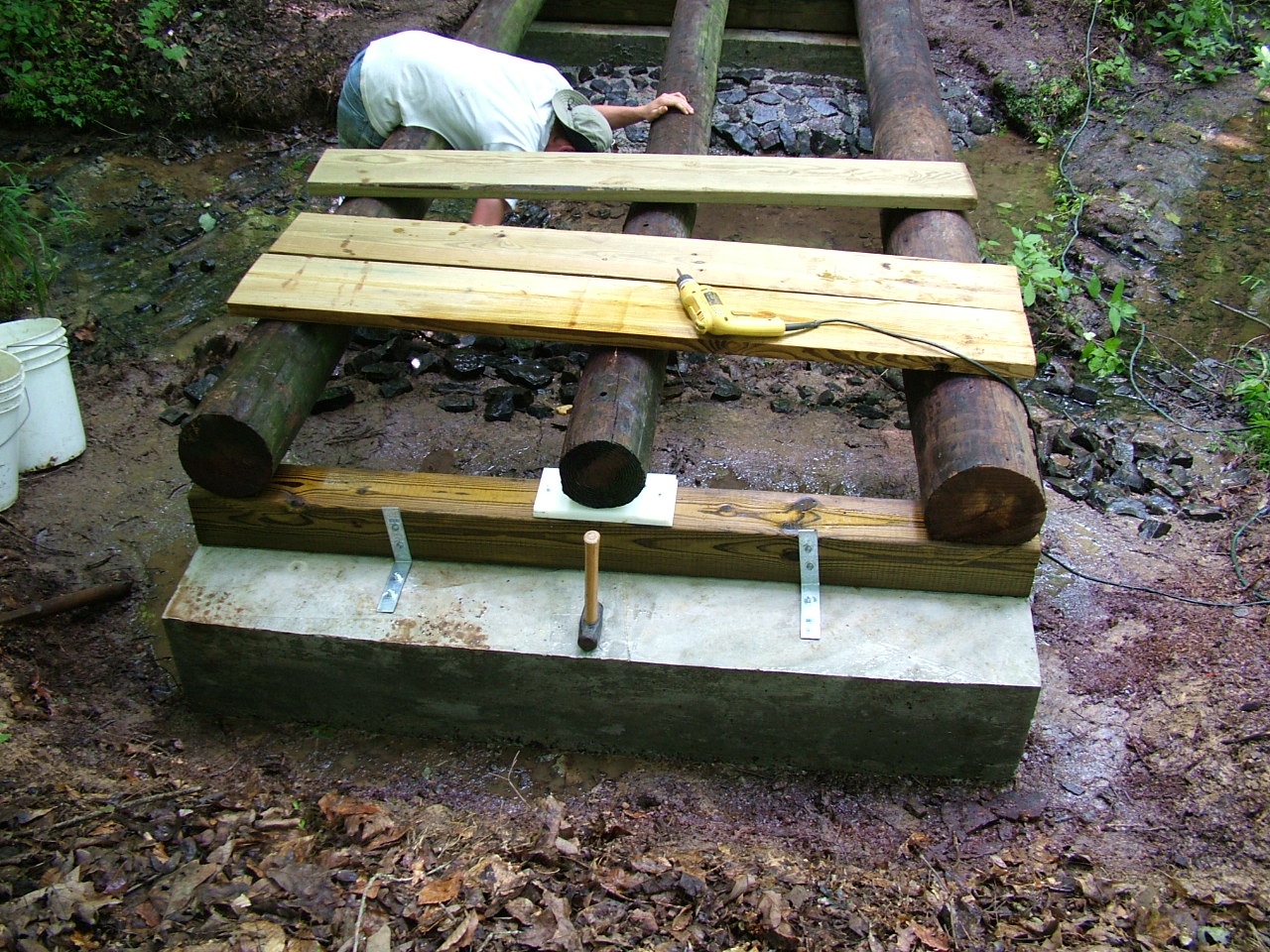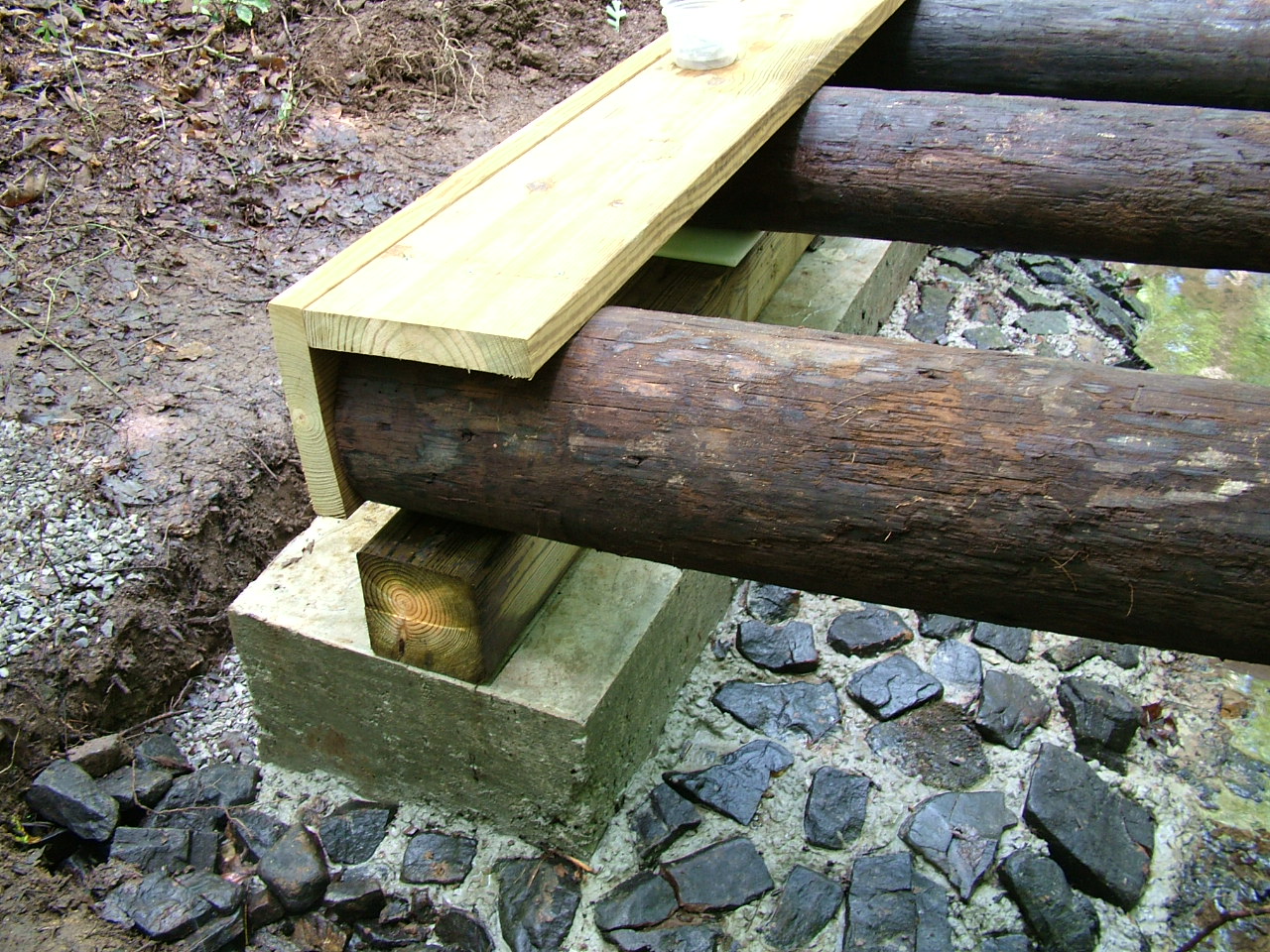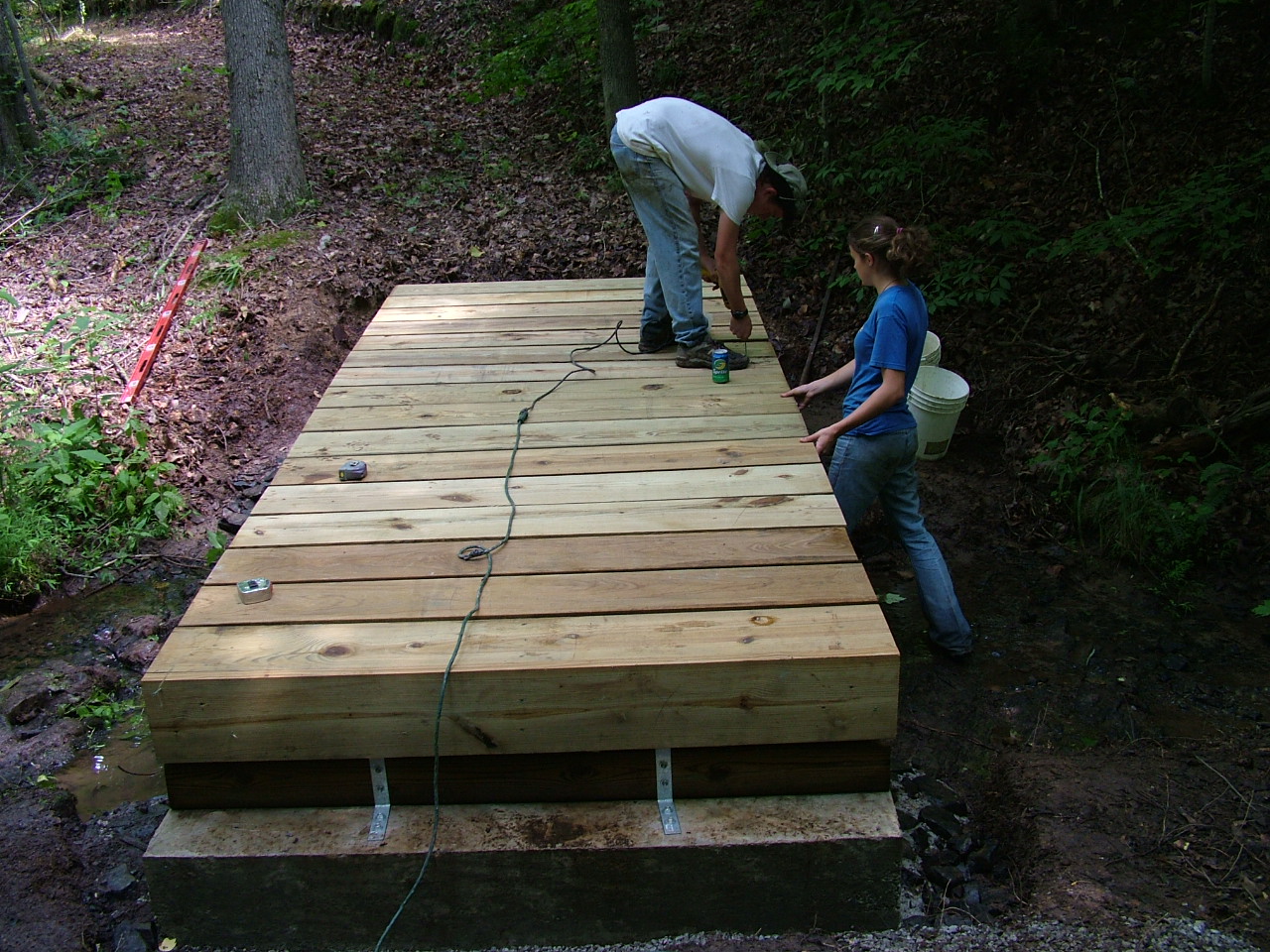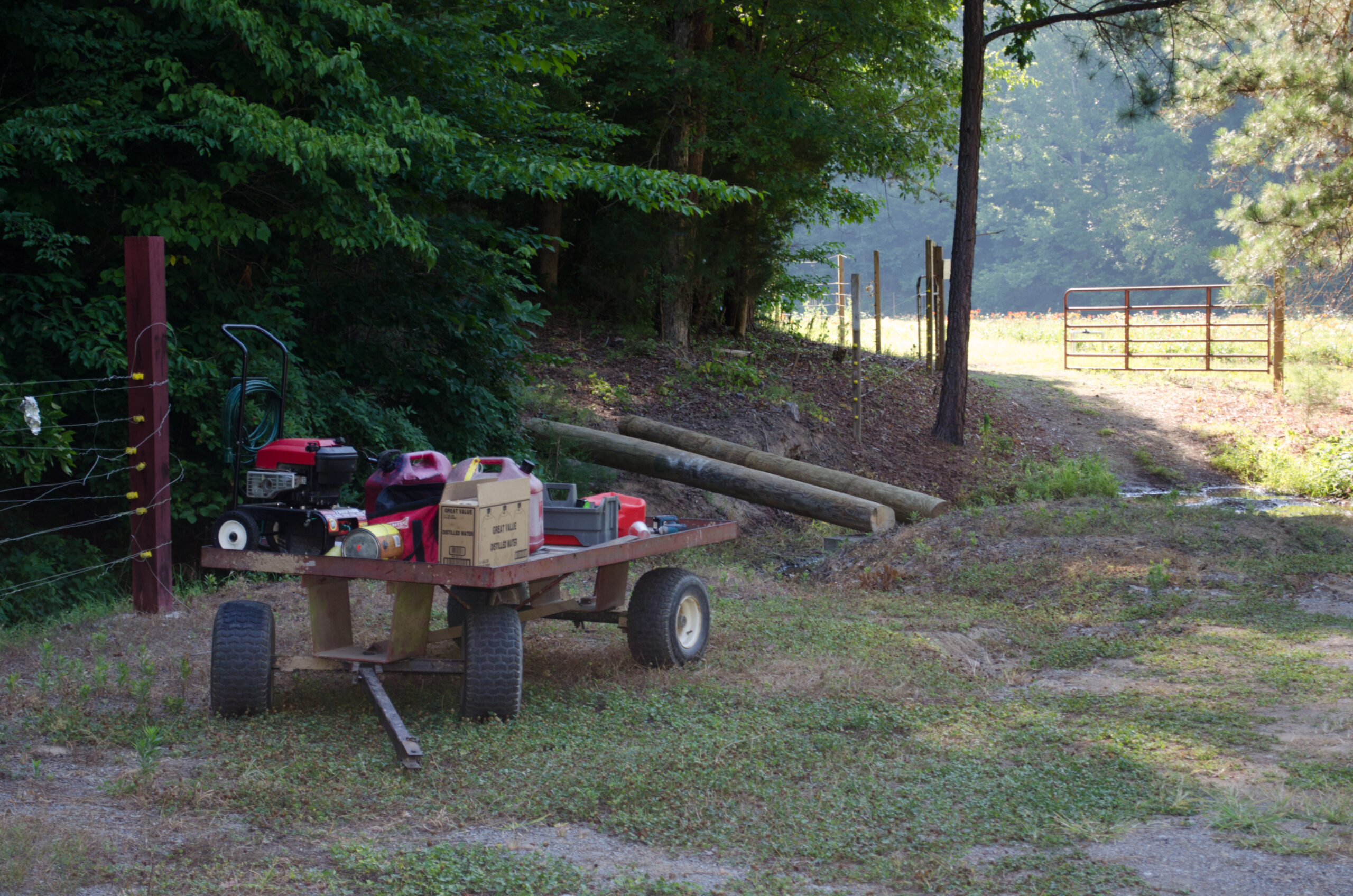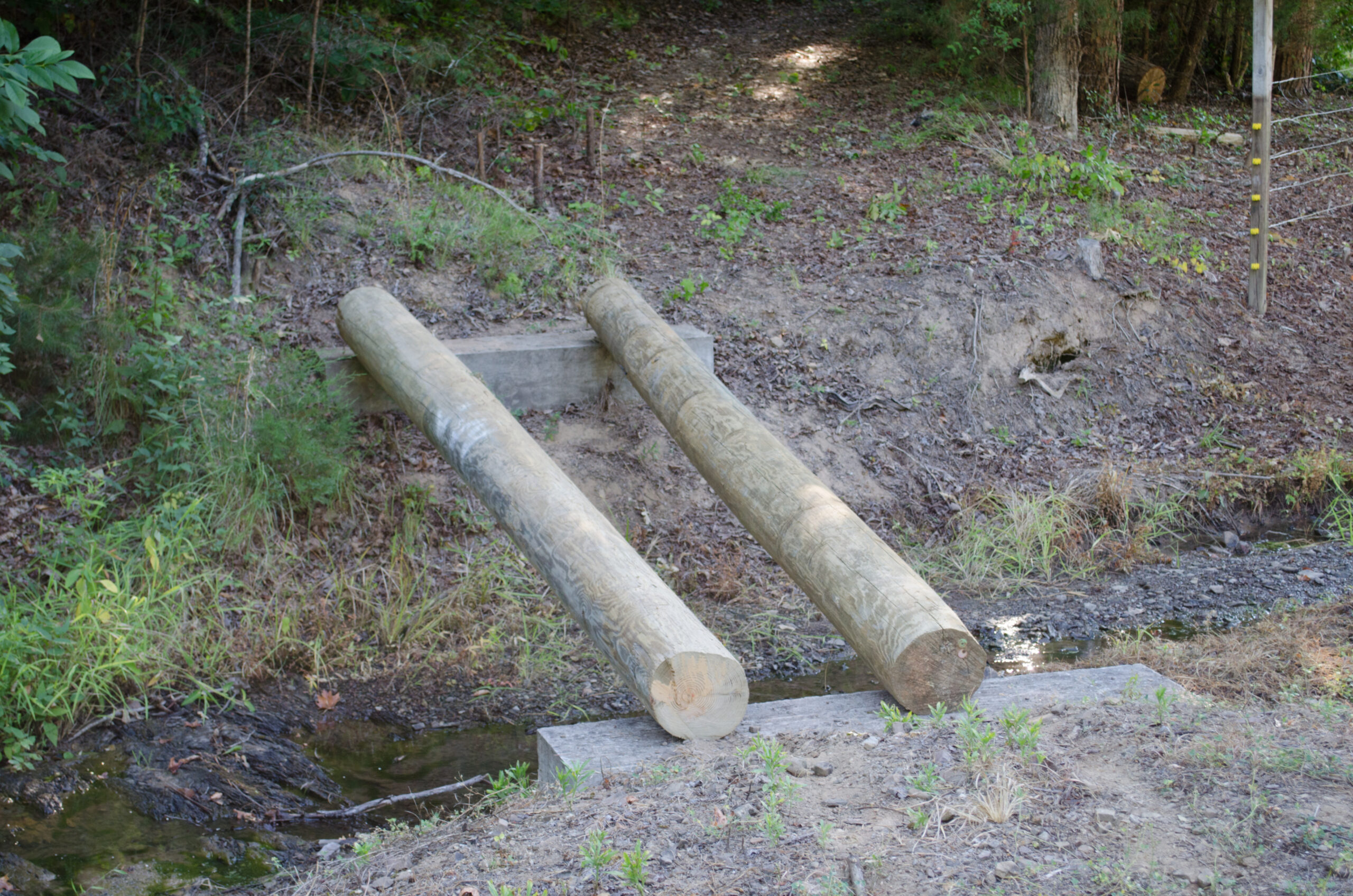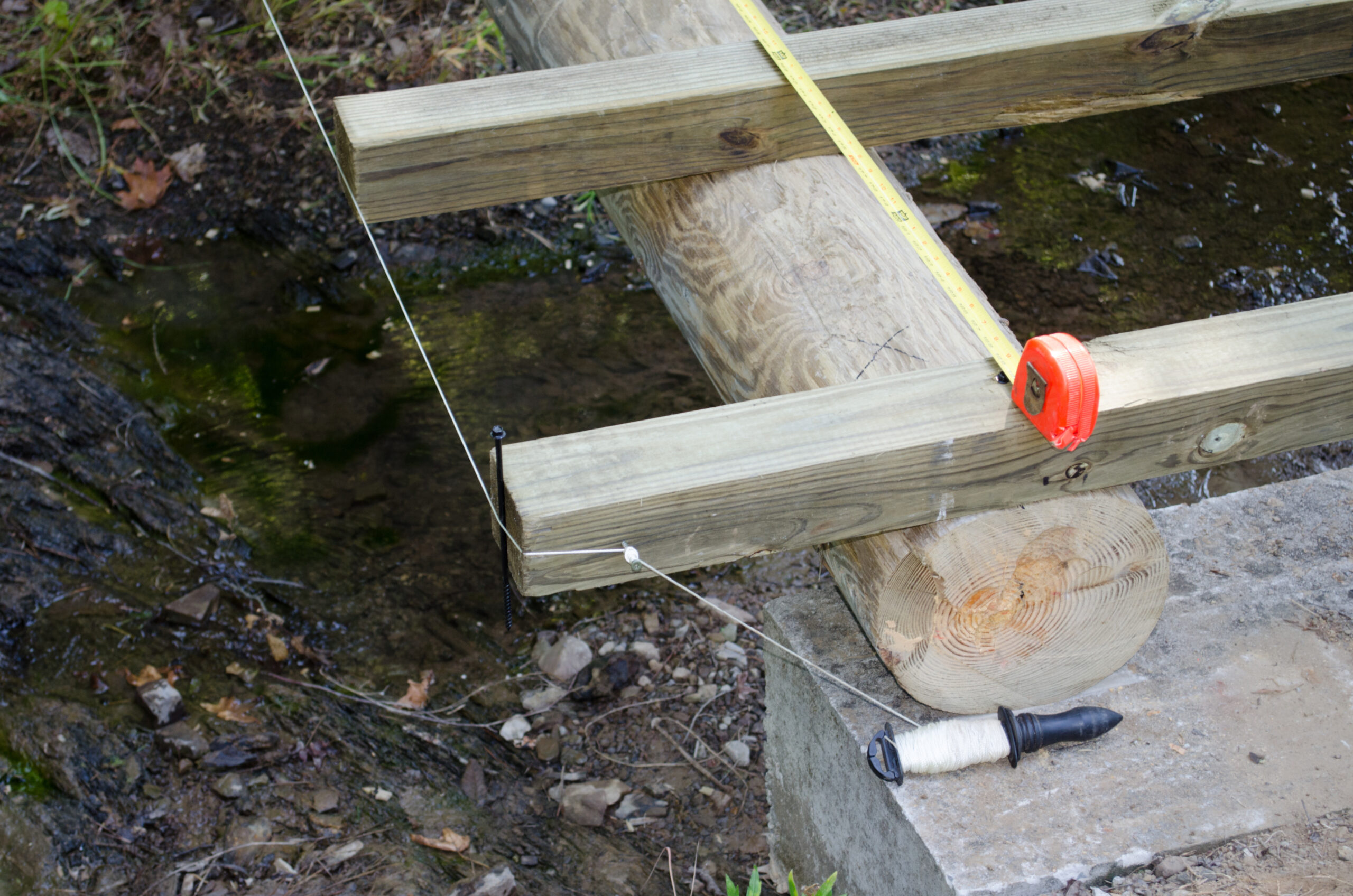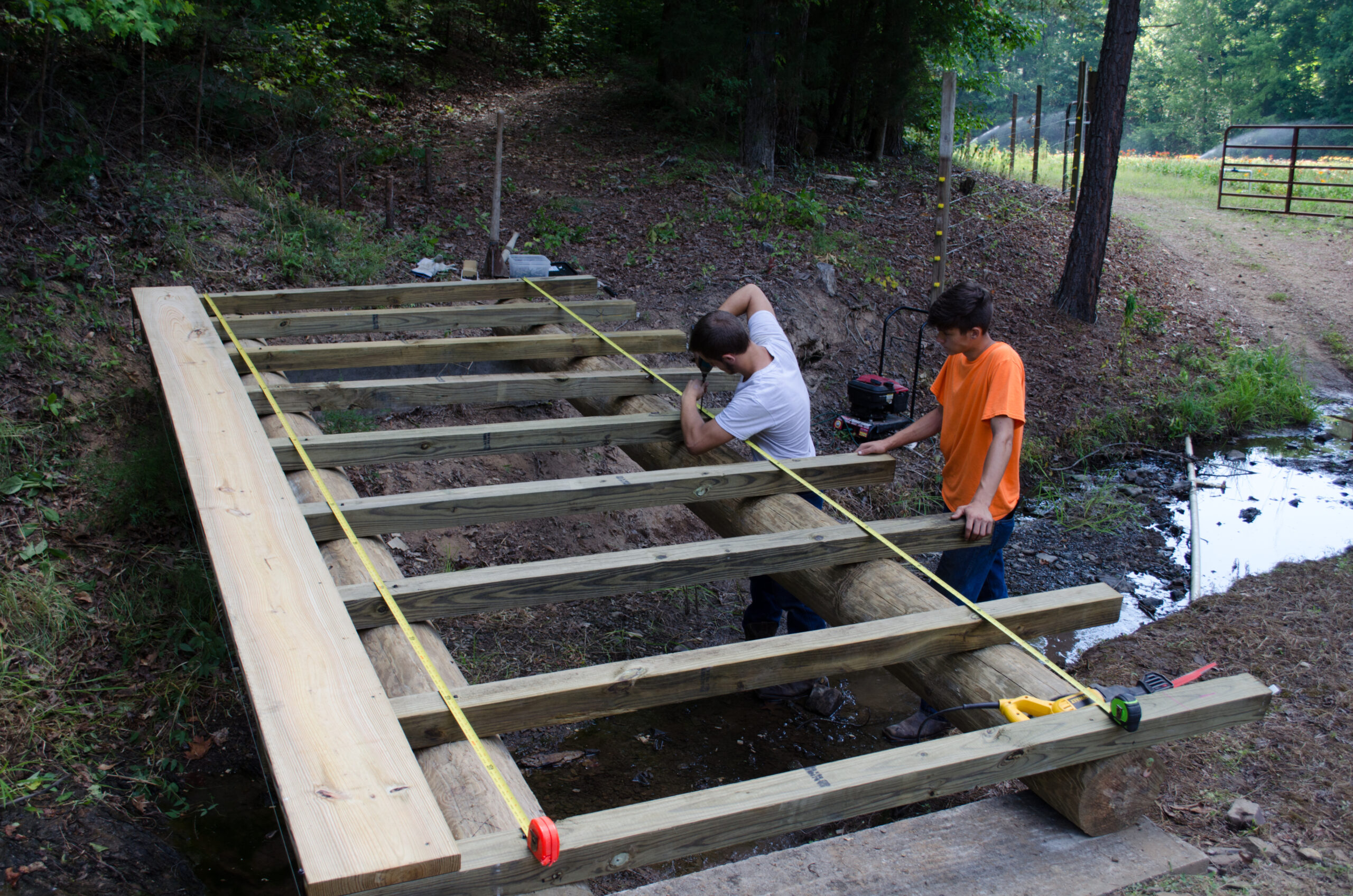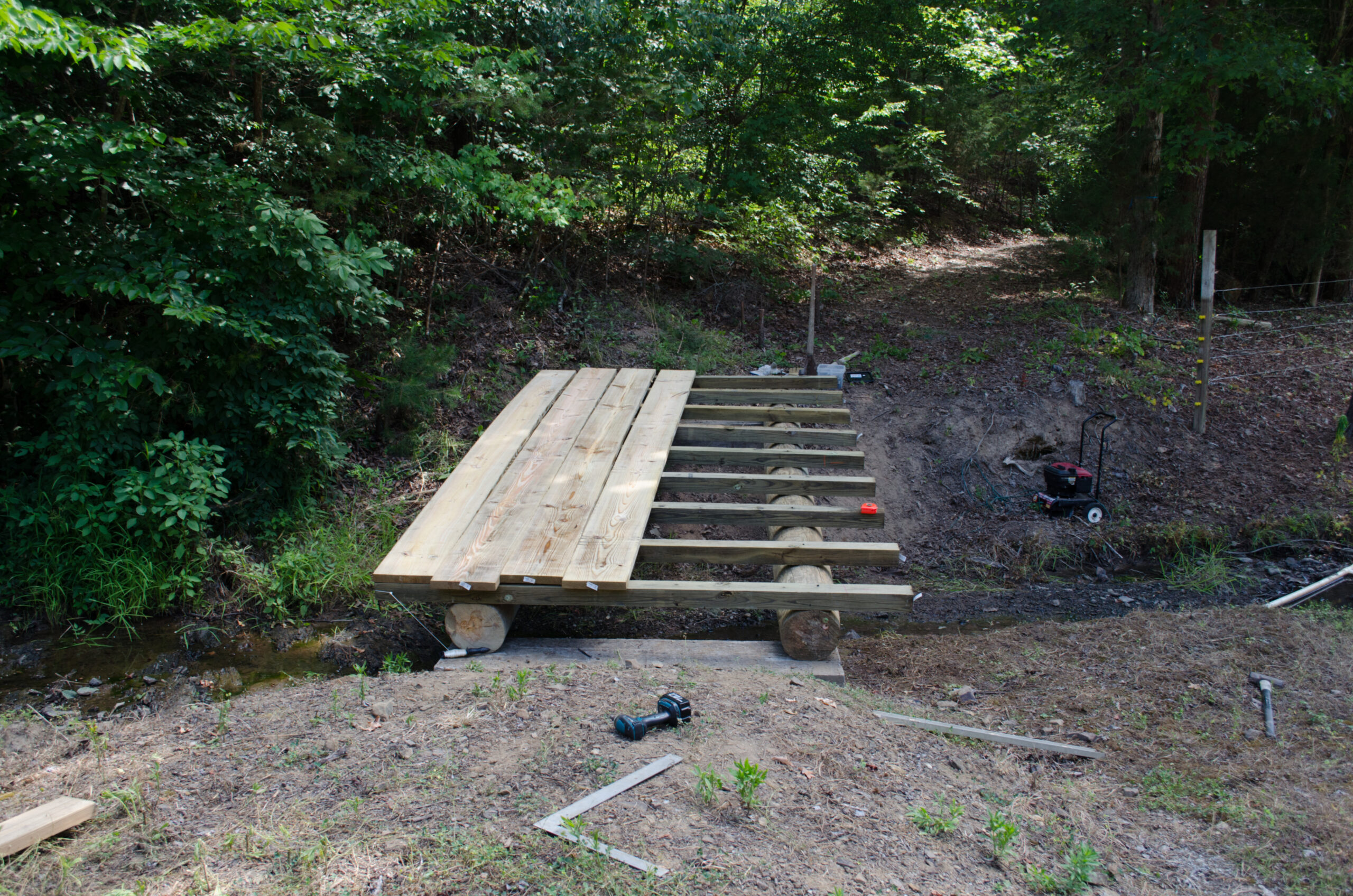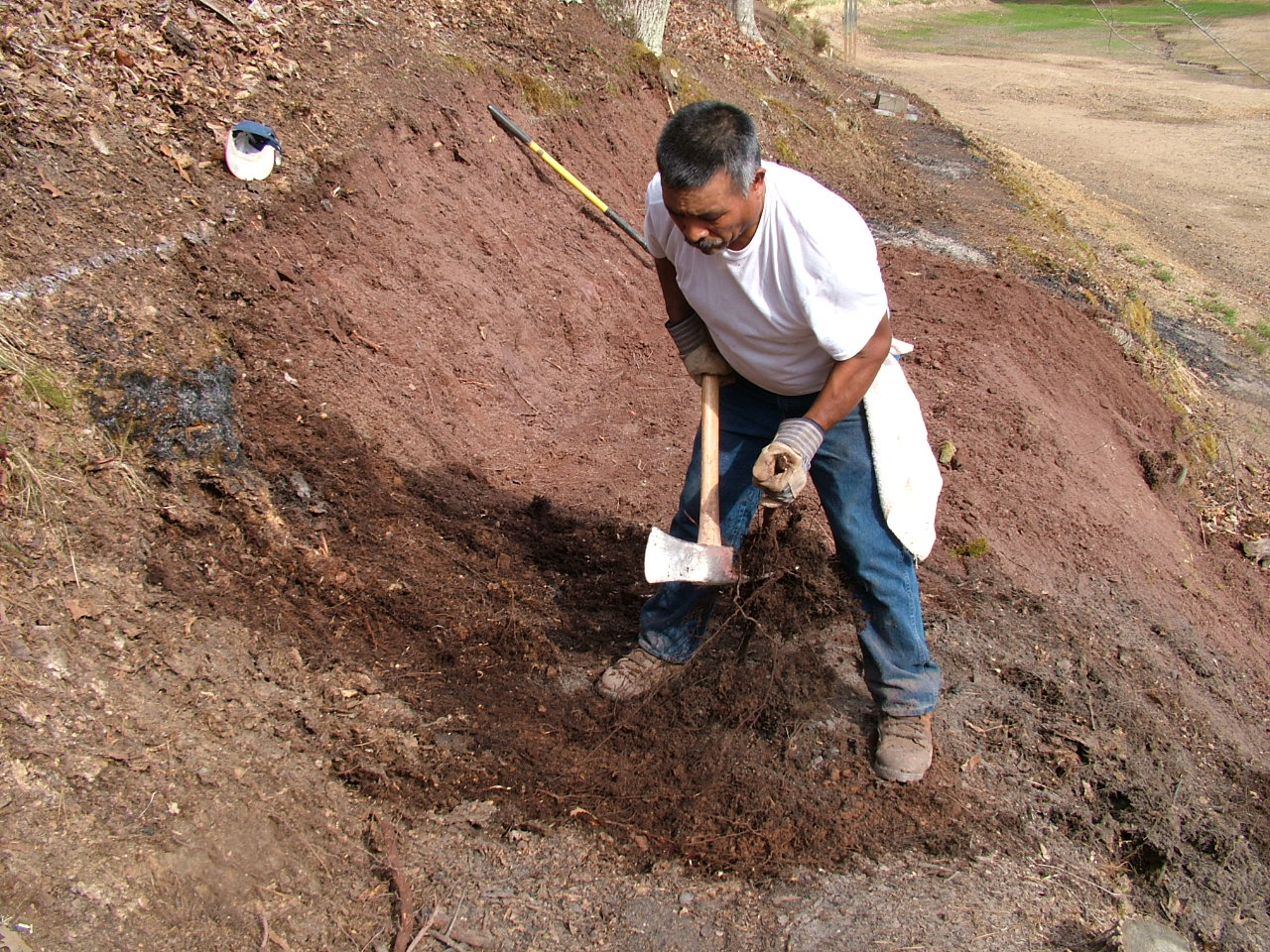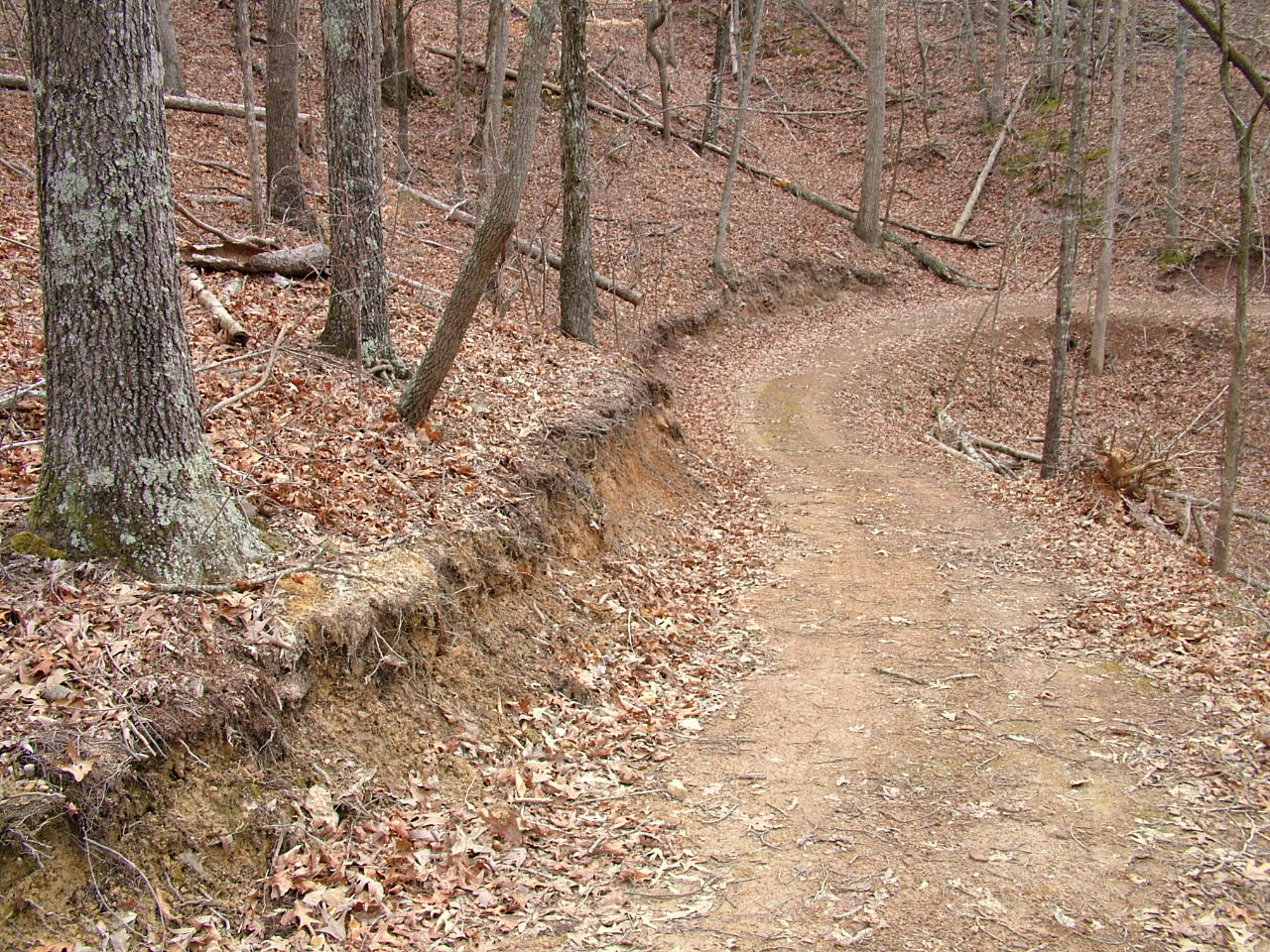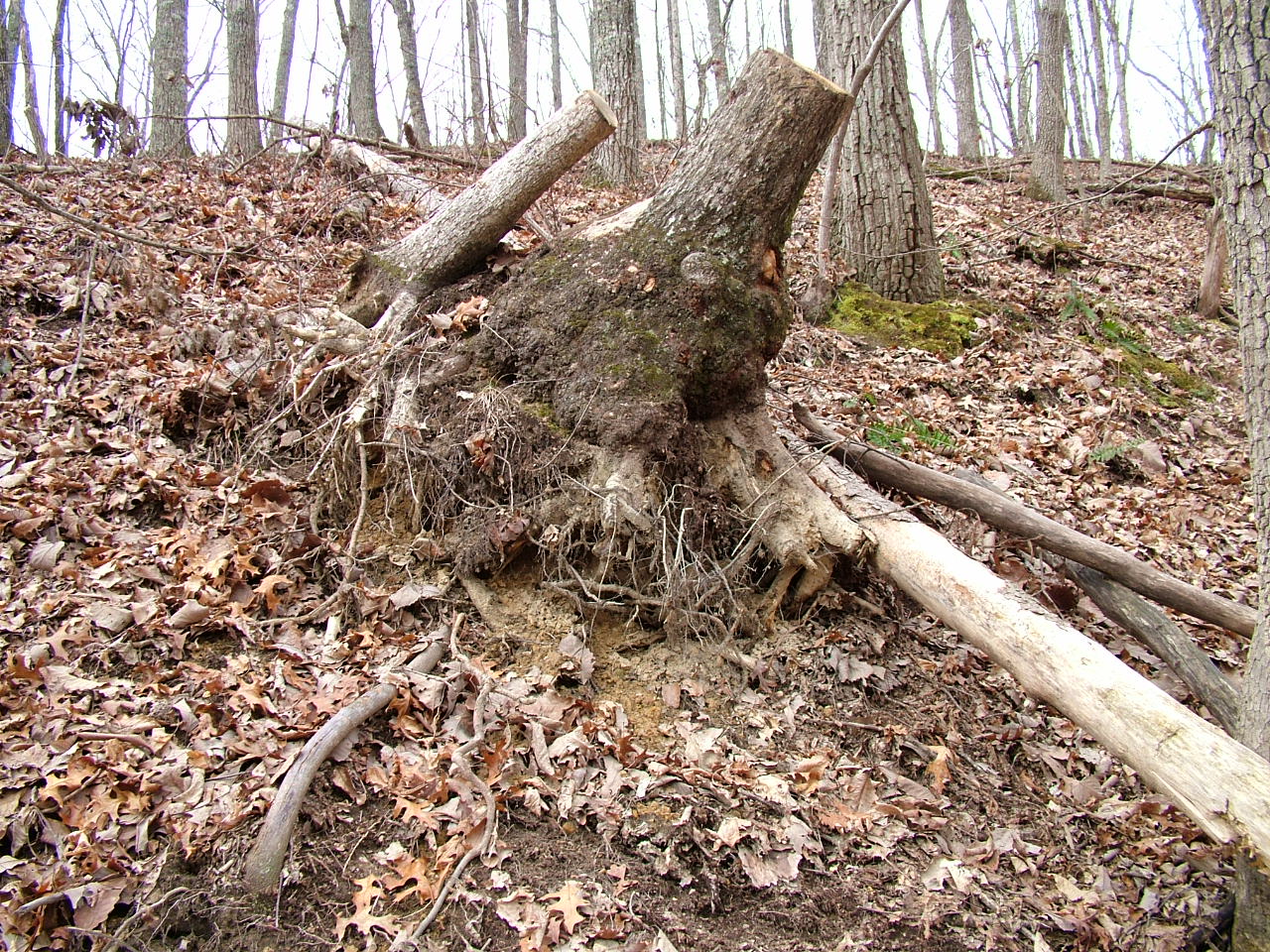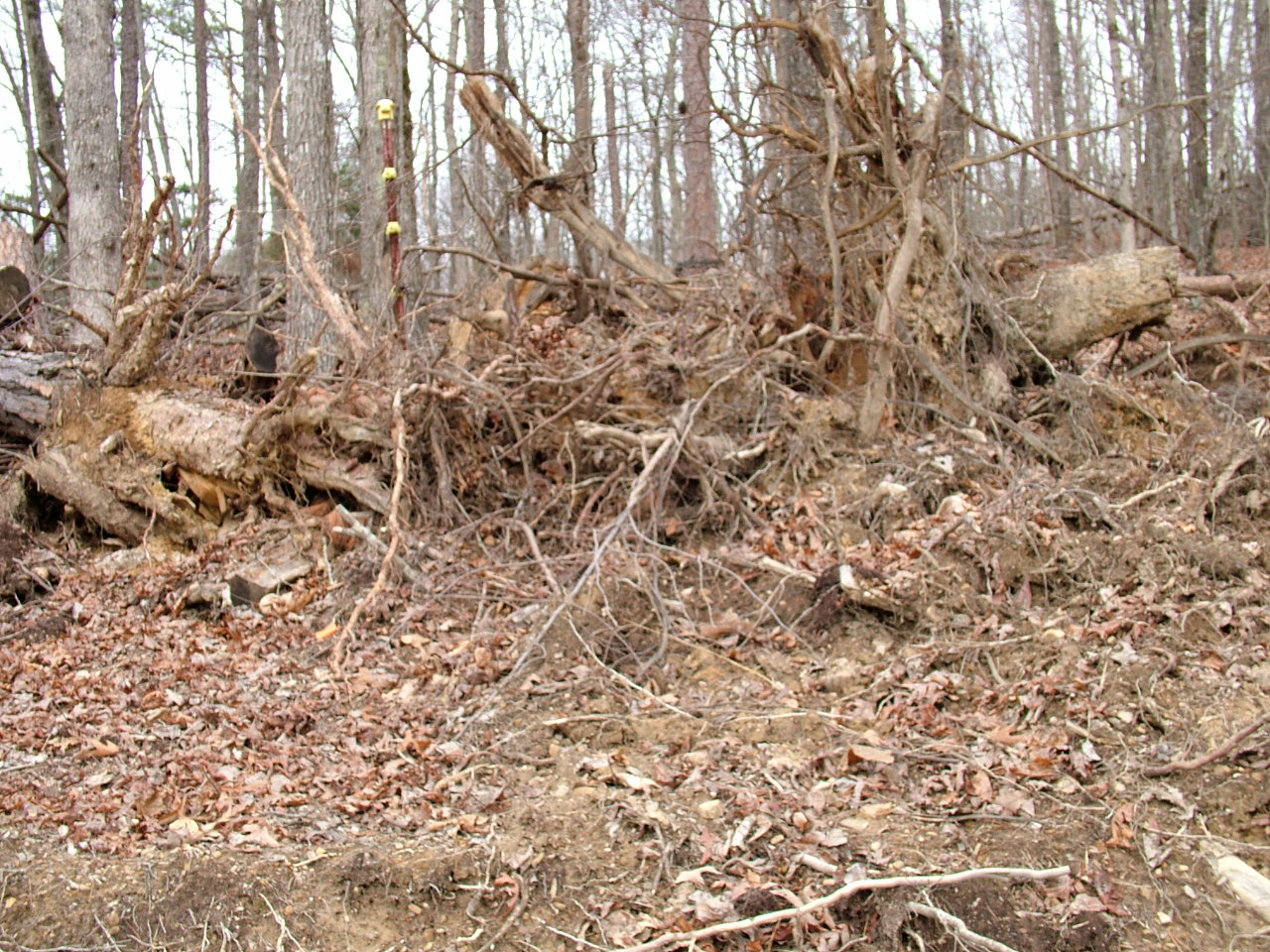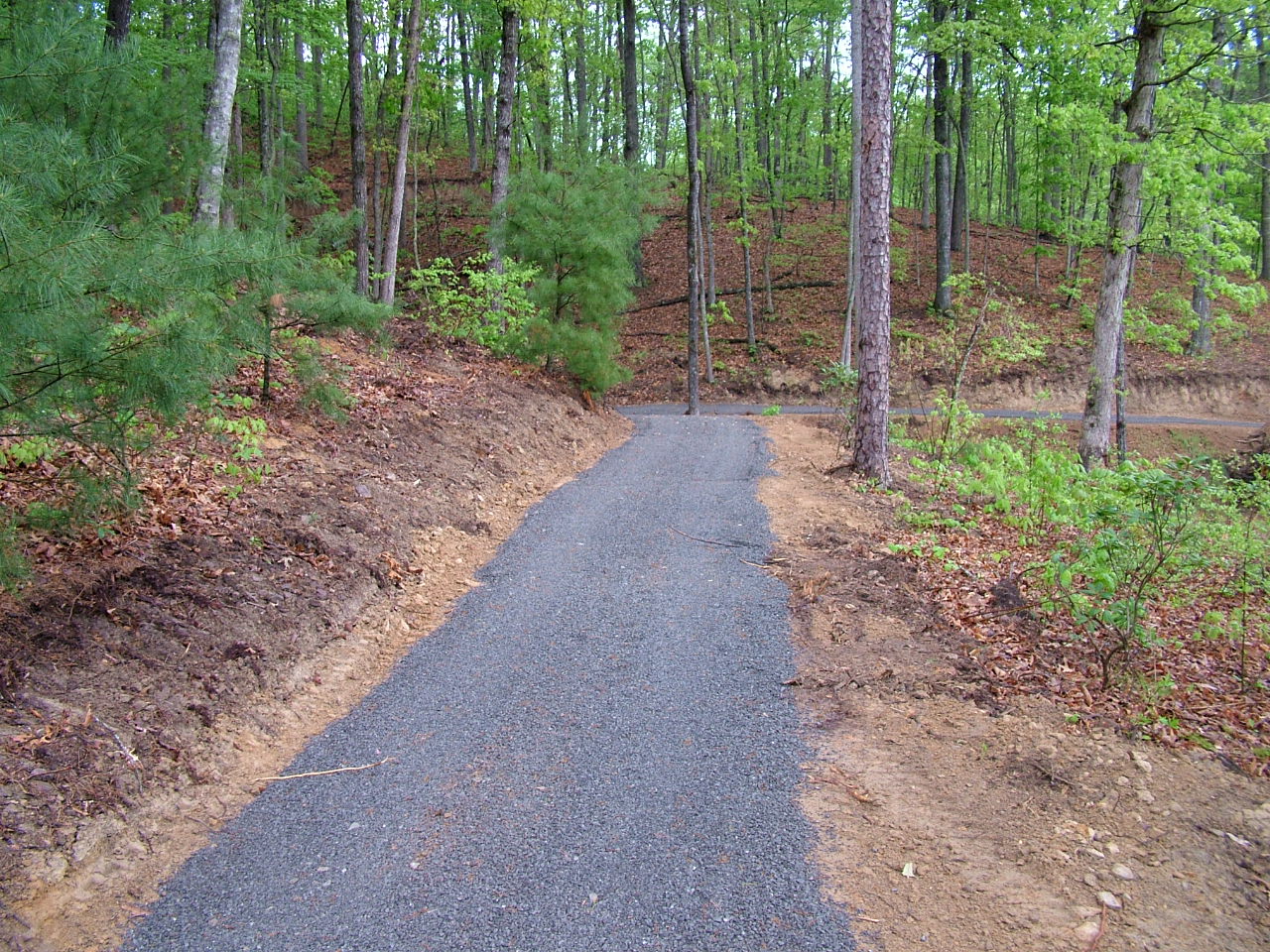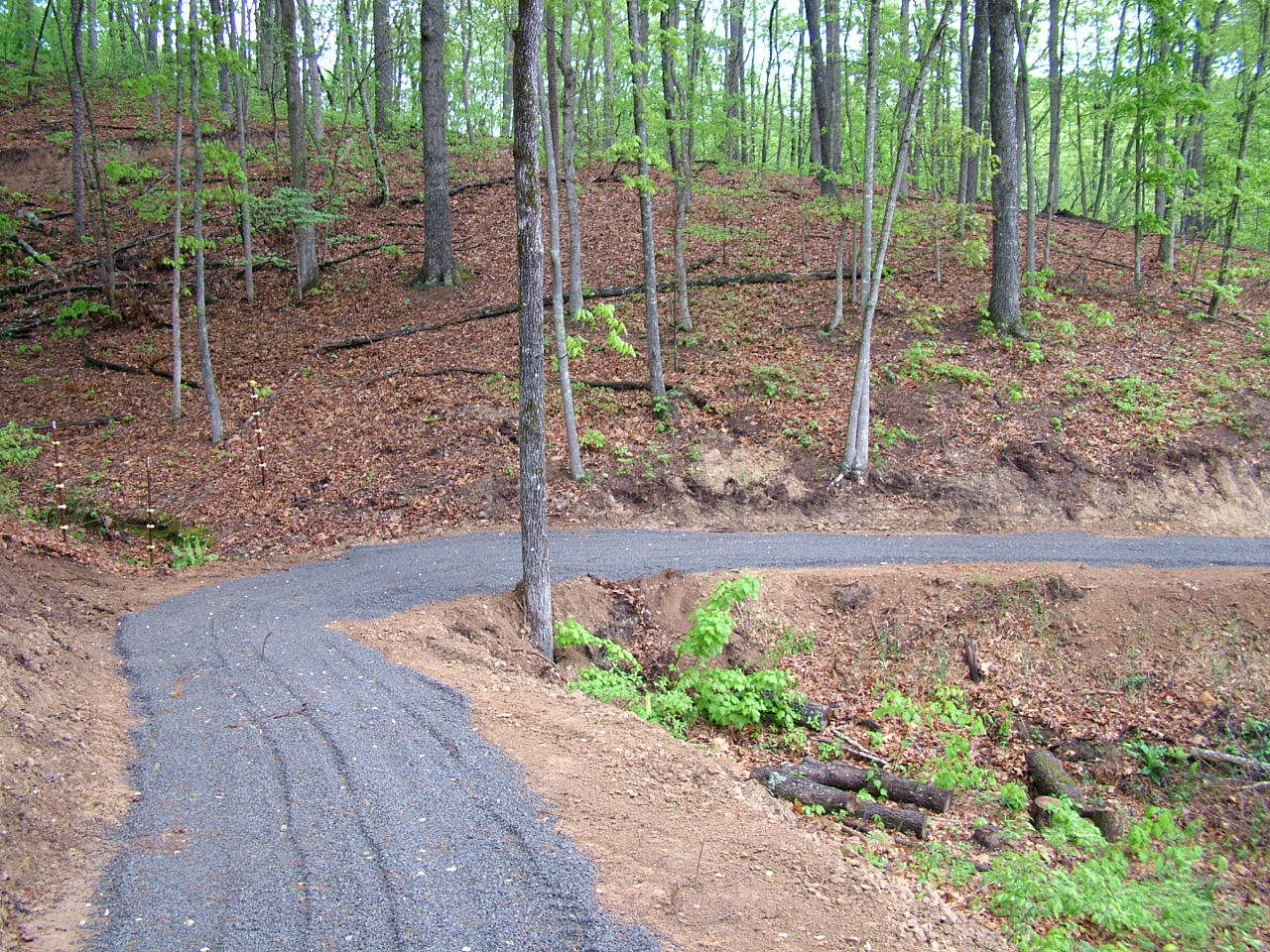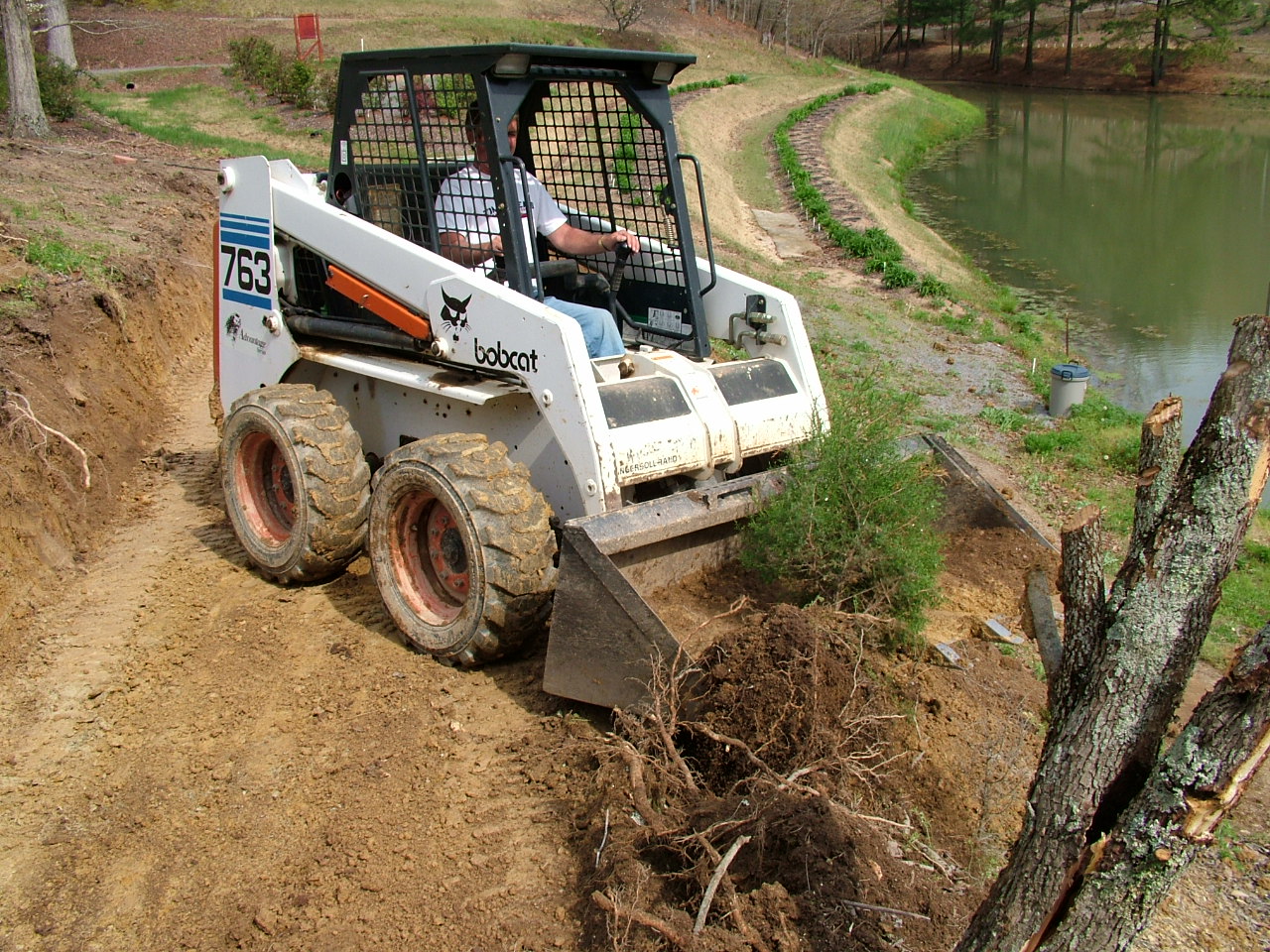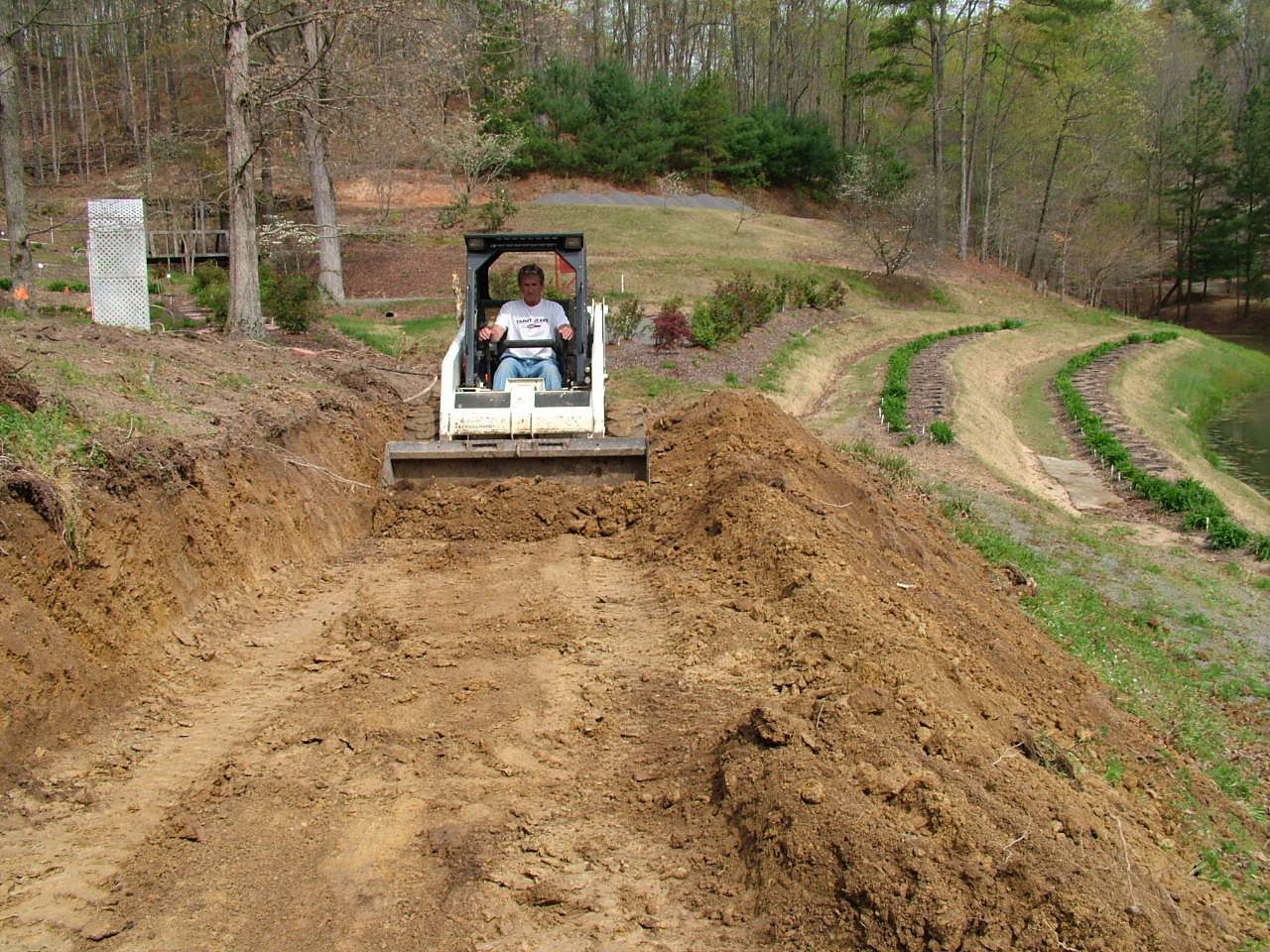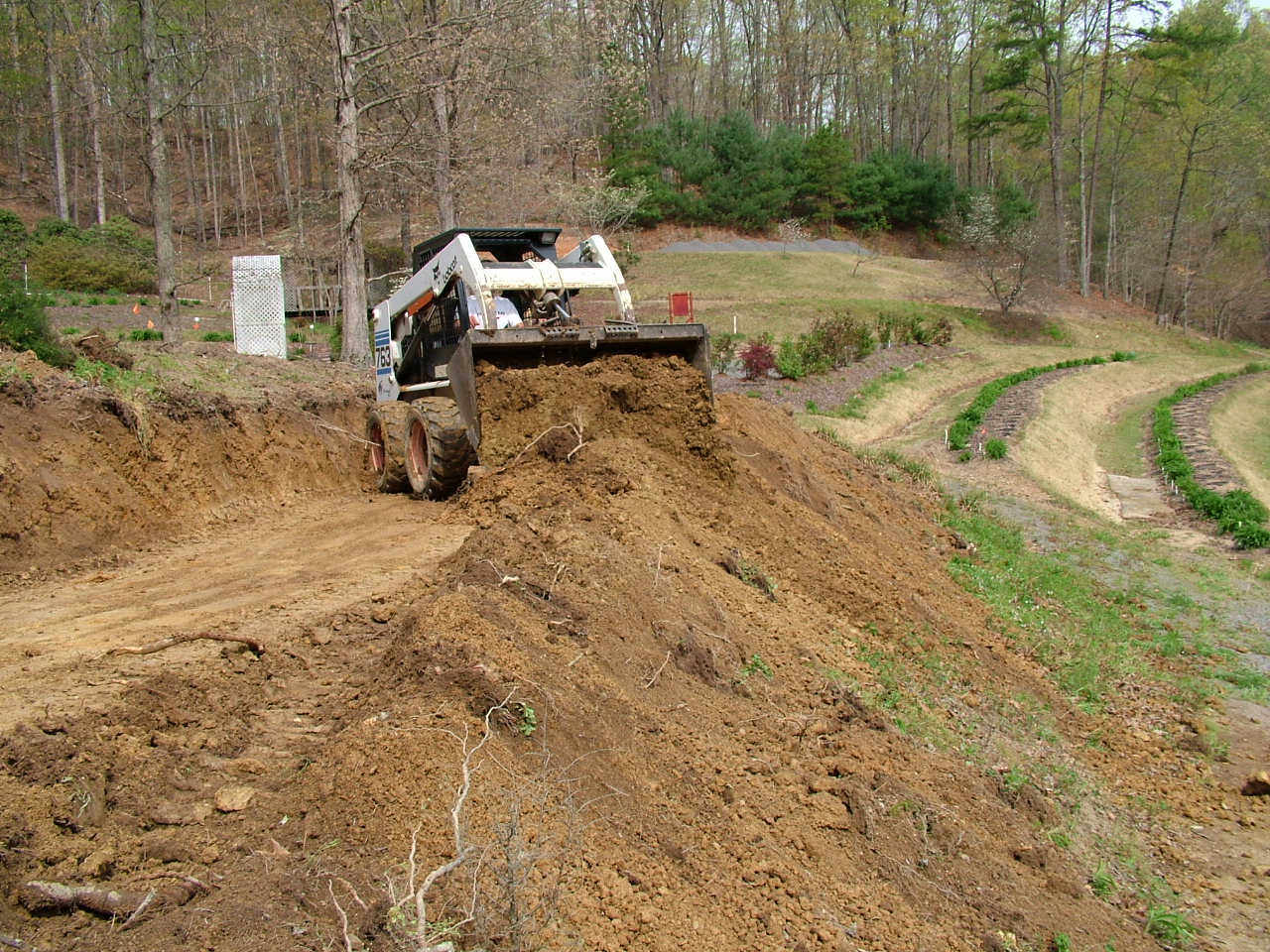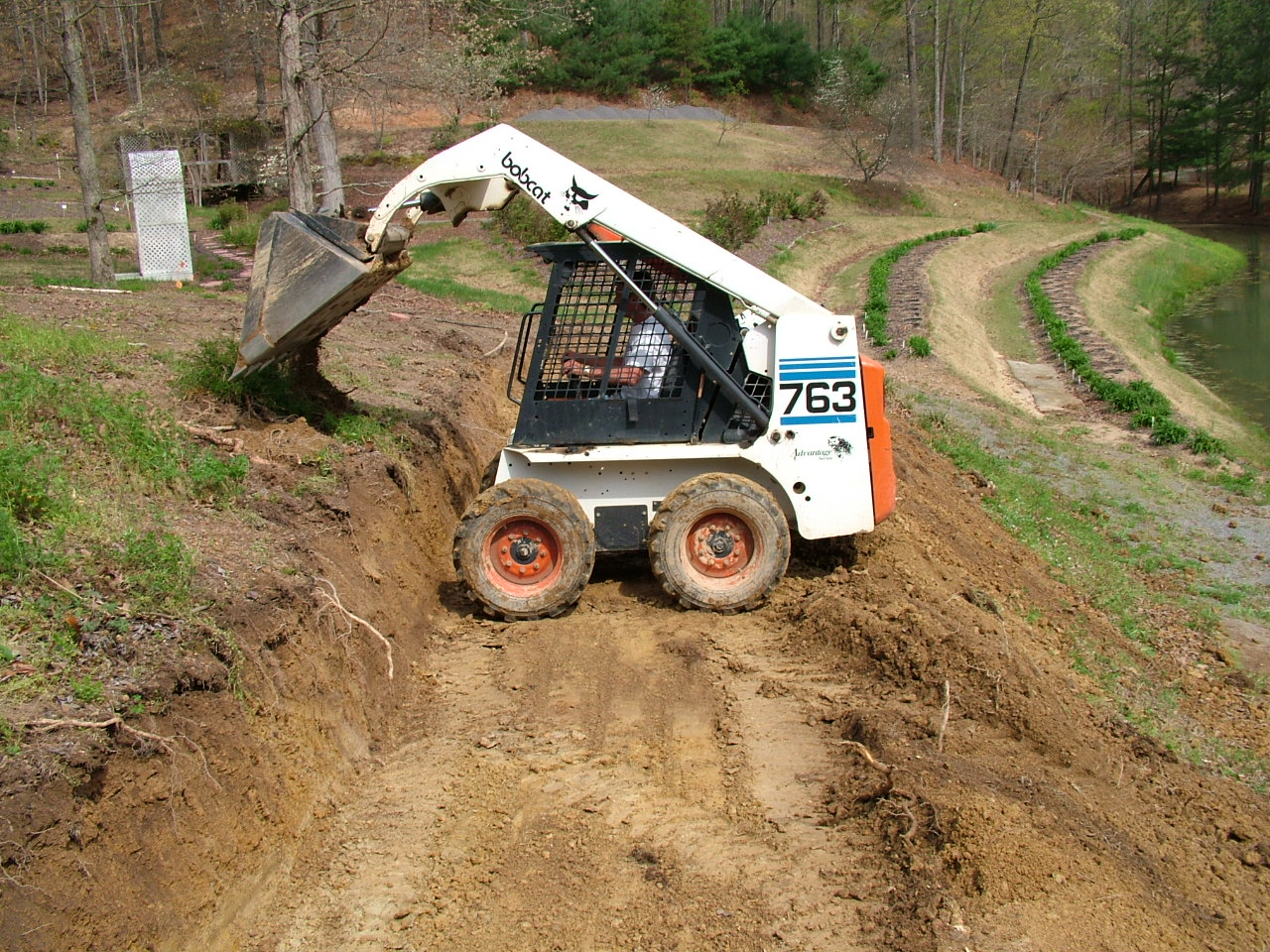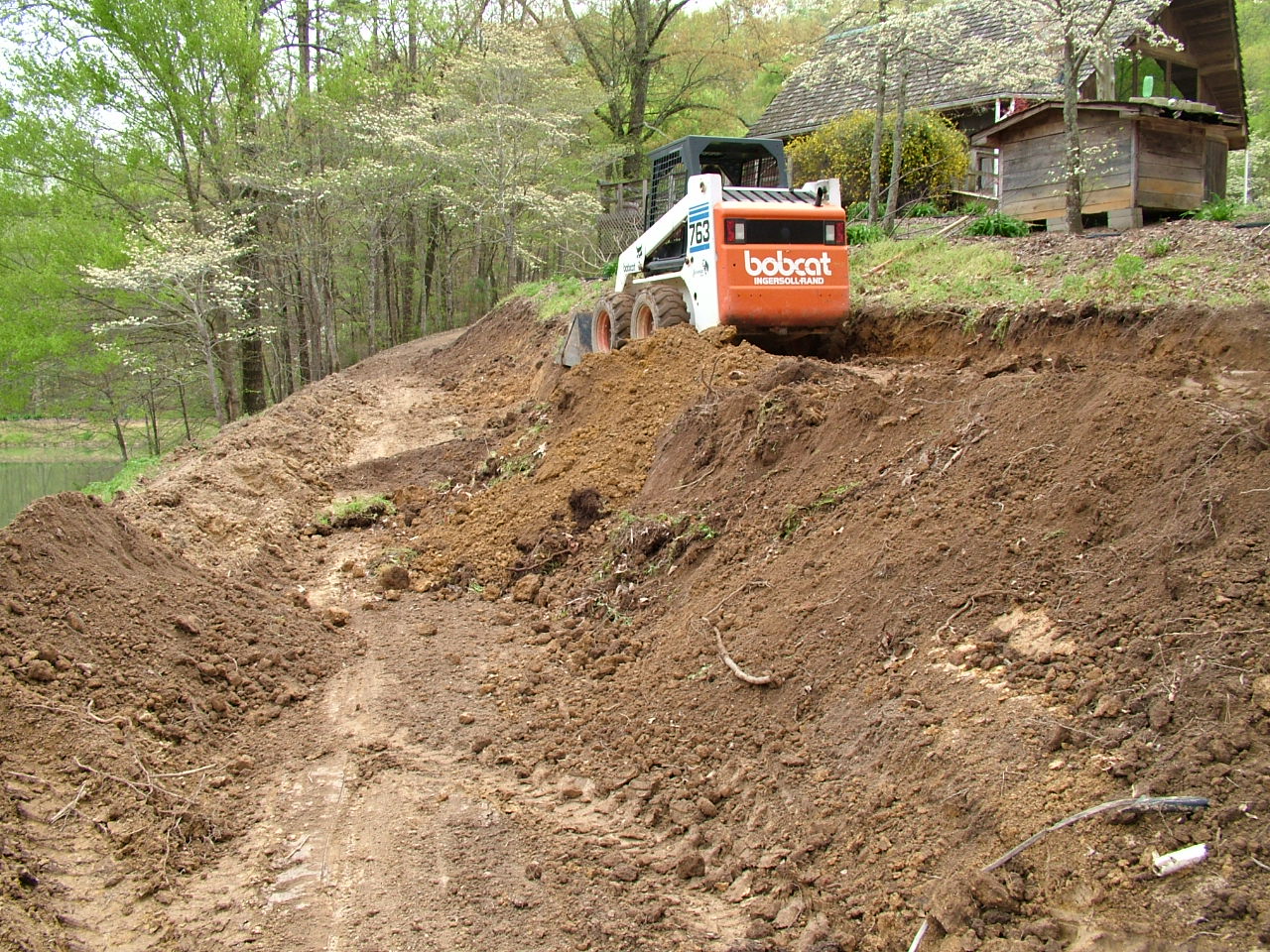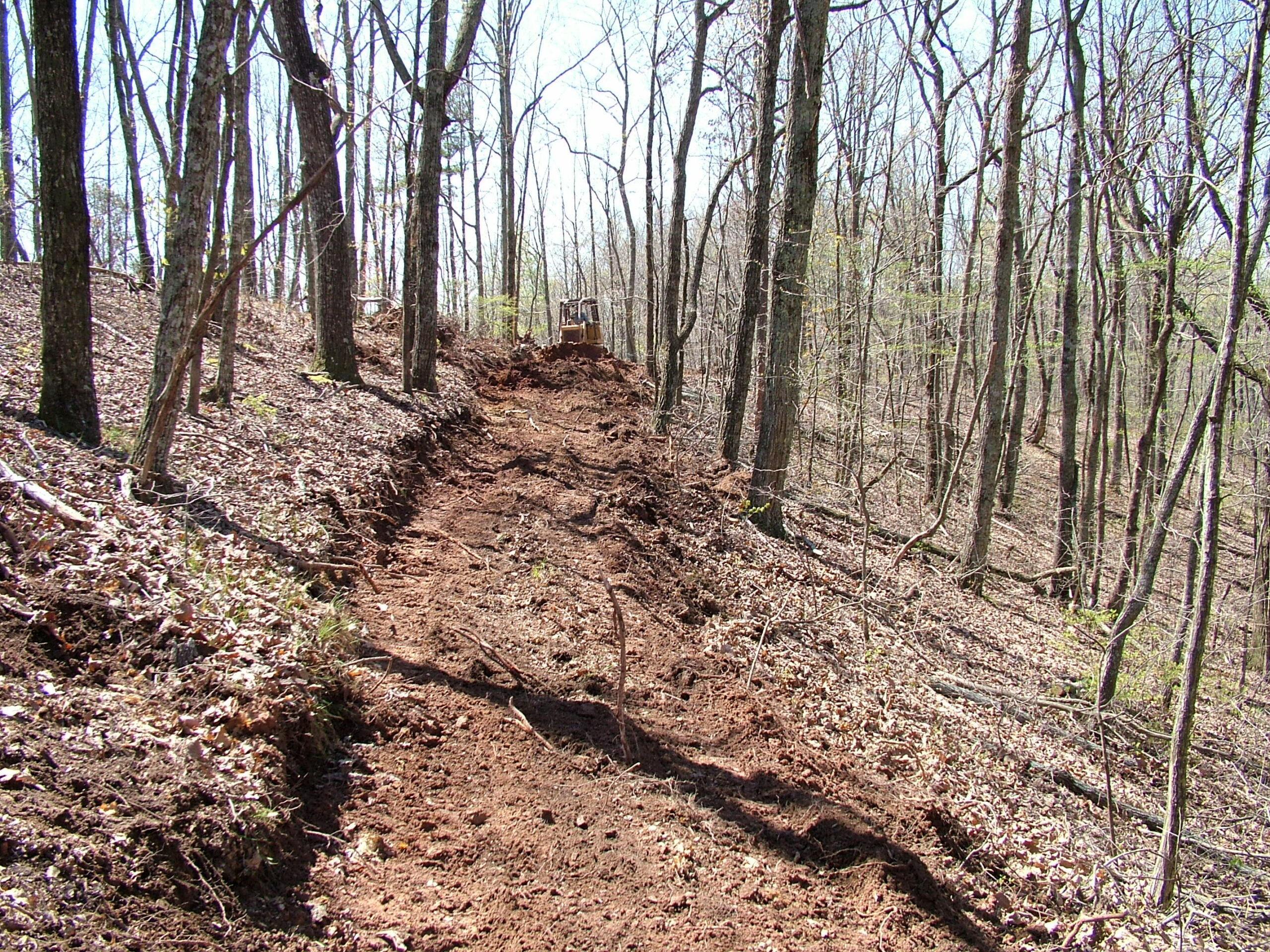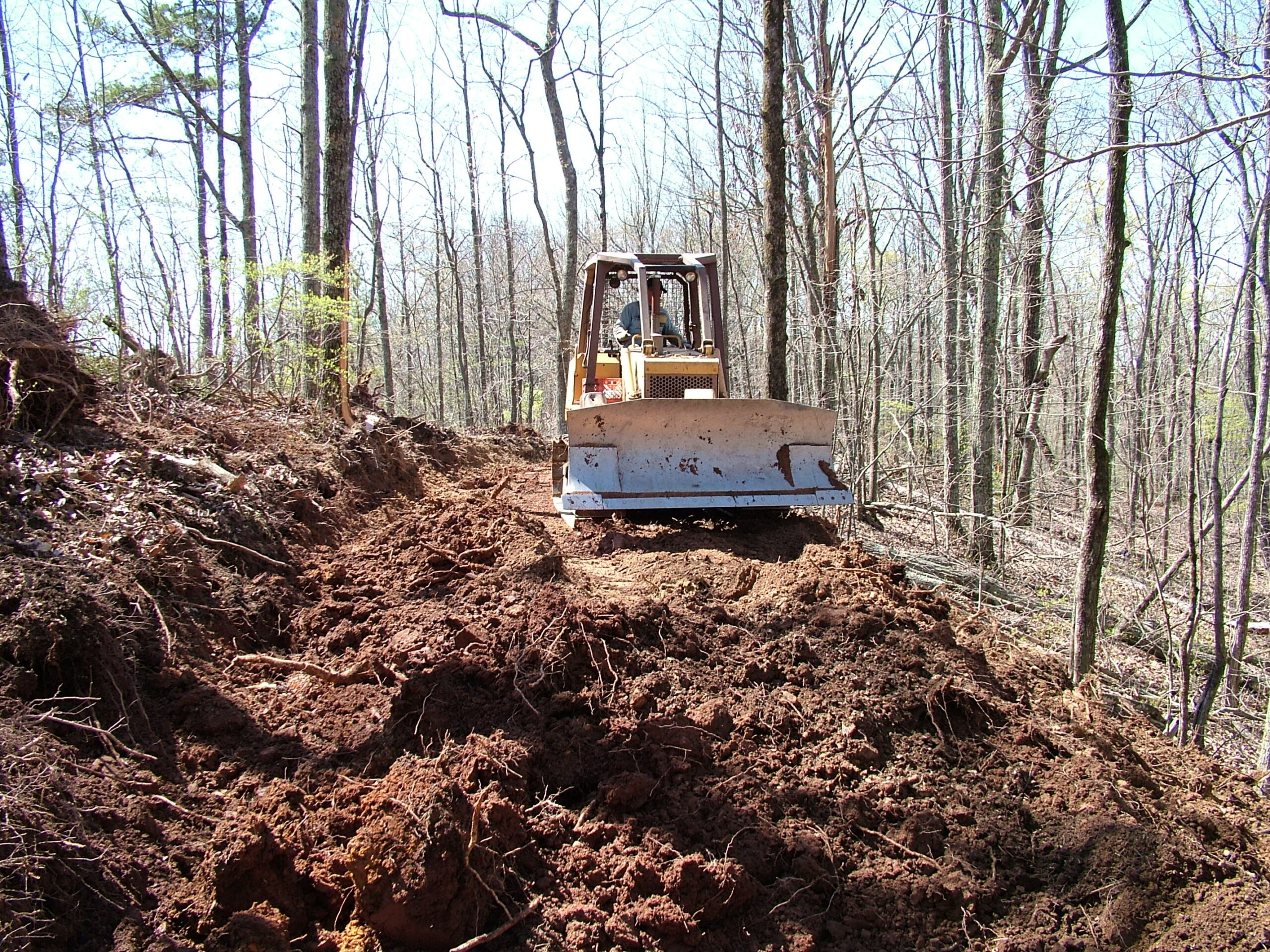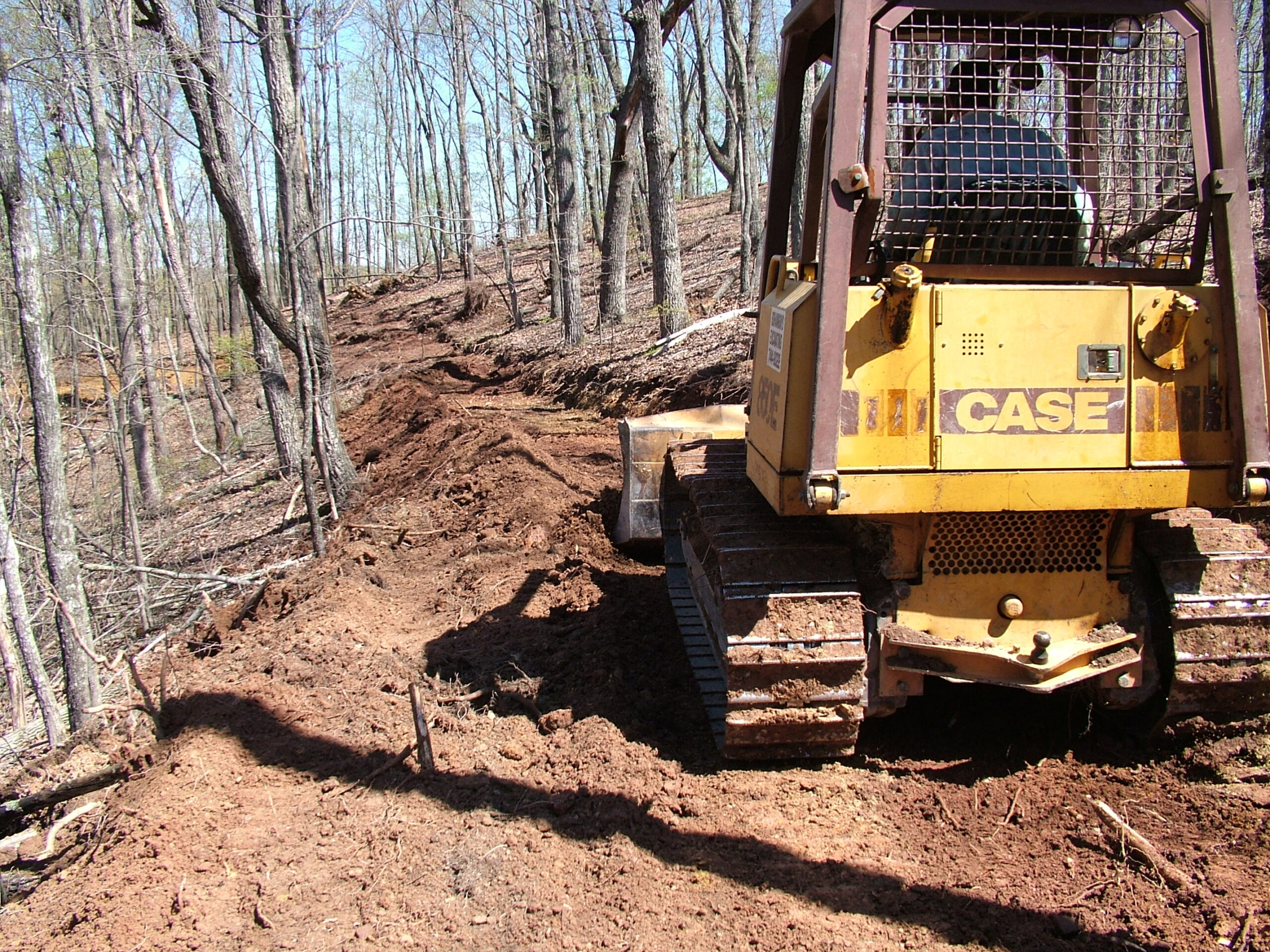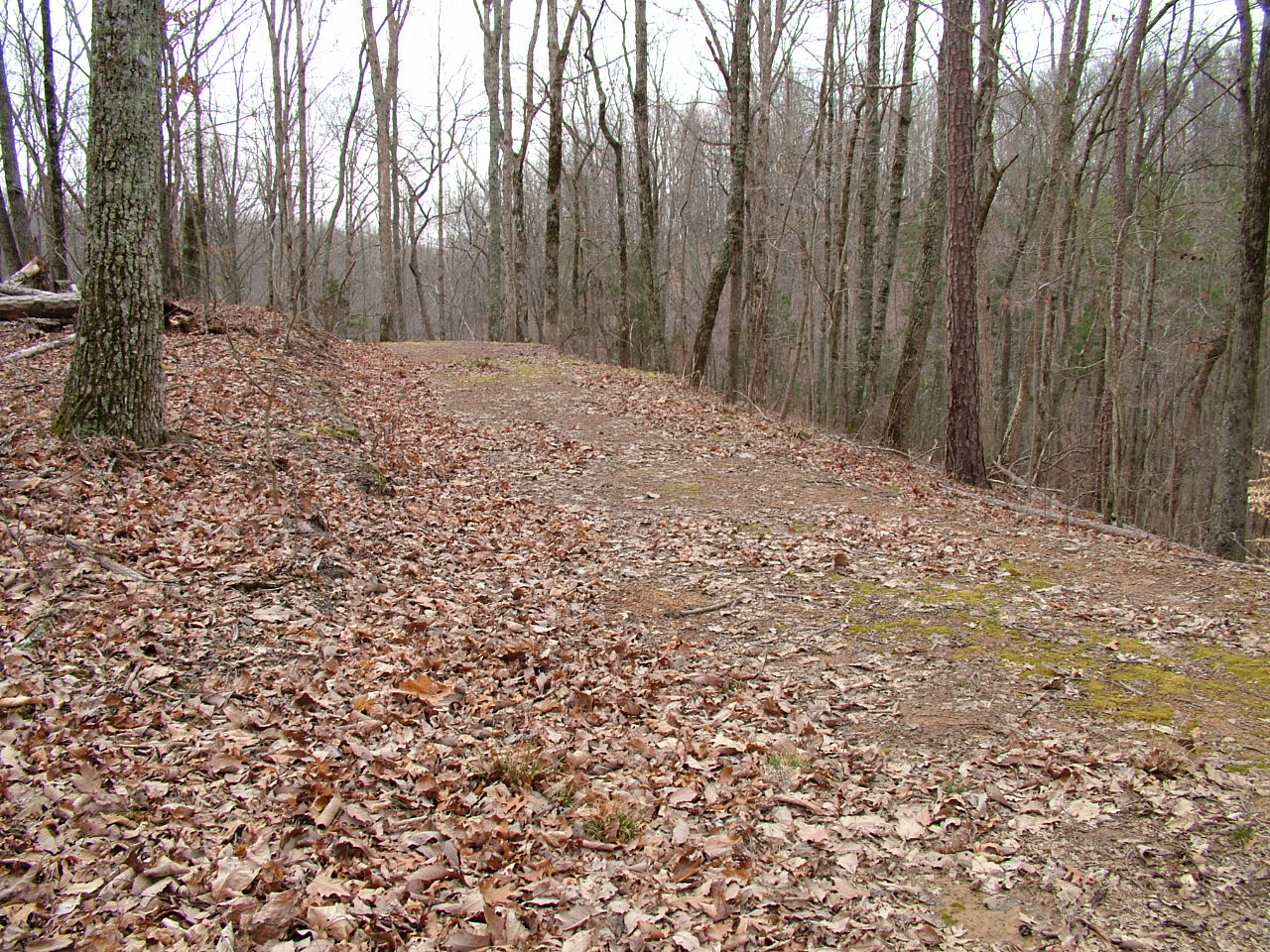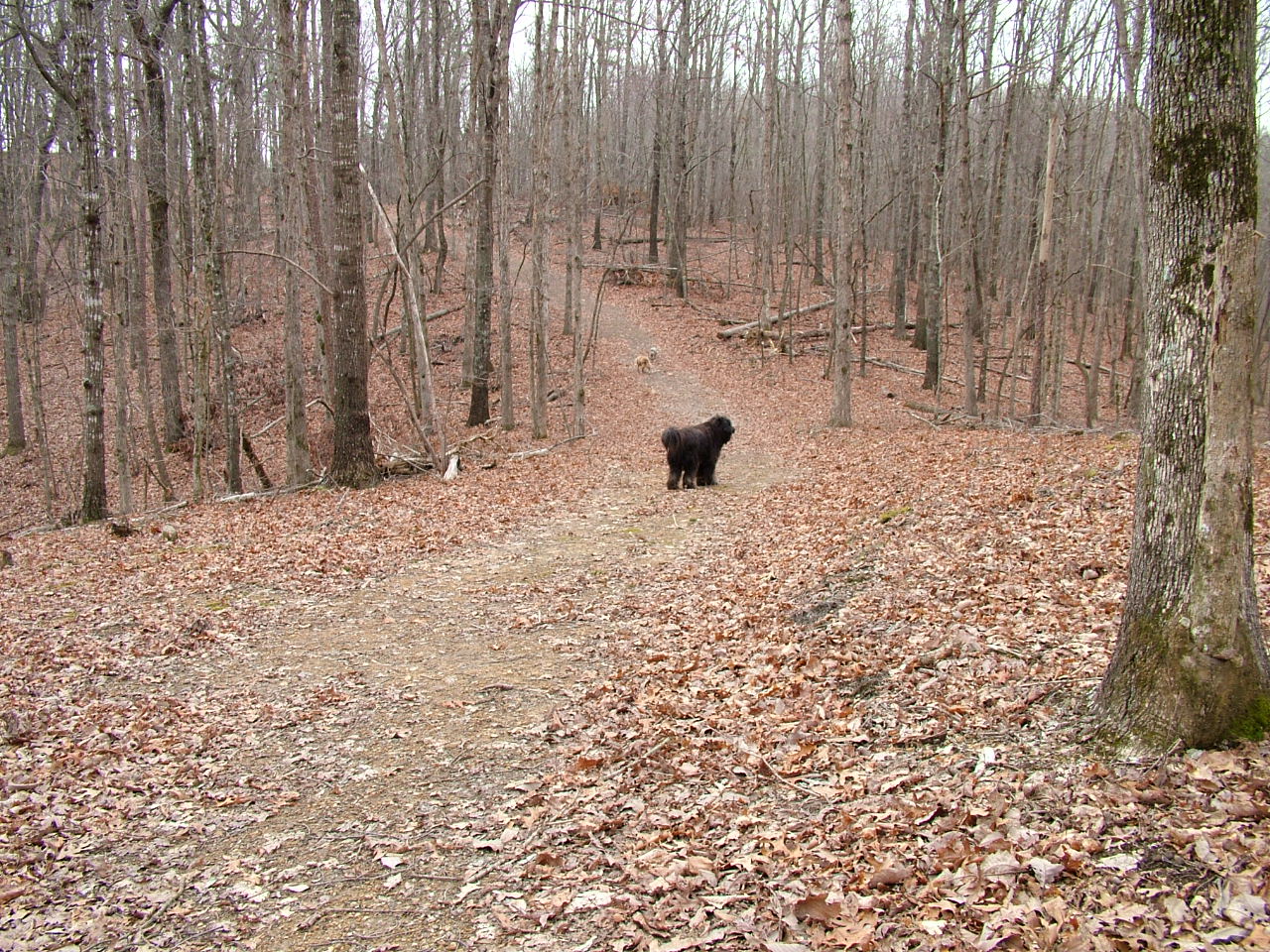Construction Techniques
To protect all of our areas from erosion, only well-designed trails have been used to access them. Around 8 miles of trails have currently been placed throughout the area. Most of these travel through the protected forest areas but about one mile or more are in the developed Garden areas. Several bridges have also been constructed to cross creeks and the lake as necessary. These bridges were all built with treated poles, timbers, and lumber. Copper abutments were used to protect the ends of the bridges from soil contact.
Tools of the Trade
Trails were built several ways, by hand with a Pulaski and Fire Rake, with a Troybilt Tiller, with Skid Steer loaders, with HighLifts, with a small Dozer, and with a Backhoe.
Hand construction. In tighter environments, hand construction was necessary to avoid damage to the area. This was a demanding task that required tough people and lots of muscle and sweat.
Troybilt Tiler: We took advantage of this tiller to make some of our early trails by digging and loosening the soil which was then moved off the trail area by hand. The foot trail to the lake was built with a Troybilt.
Skid Steer Loader: This versatile equipment was ideal for creating trails in the Gardens and flower beds alongside the trails. It was also used for back sloping trails that were built with Highlifts and Dozers. We also moved the larger stumps that were taken out as trails were built leaving a finished look to all newly created trails.
A large amount of hand work also went into constructing the trails. In many areas only hand tools would work due to tight spaces. Also hand tools were used to build some of the trails around the lake due to restricted access:
Small Dozer: Part of the Hollow Ridge Trail and some of the other trails were built using a small dozer. A skid steer loader was used to move stumps to burial and backslope the banks.
High Lift: Much of the Hollow Ridge Trail was built with a small High lift dozer. The ability to move earth, remove stumps, and easily build a finished trail made it an ideal machine for the job.

